The Foton Tunland has appeared in Australia in fits and starts over the past 15 years, with several independent distributors each having a crack at selling the Chinese ute.
Auto giant Ateco took over the franchise in 2014, but its run with the Tunland was short-lived as the Cummins 2.8-litre diesel used at the time failed to meet incoming emissions regulations. Foton is back again – still under Ateco – with an all-new Tunland to join Australia’s booming midsize ute market.
The 2026 Foton Tunland arrives as a four-model line-up split into two distinct grades: The entry-level V7 and the up-spec V9. Beyond the unique front-end styling and the addition of wheel-arch flares, the key difference between the two is that the V9 replaces the V7’s leaf-sprung rear end with a multi-link coil-spring set-up.
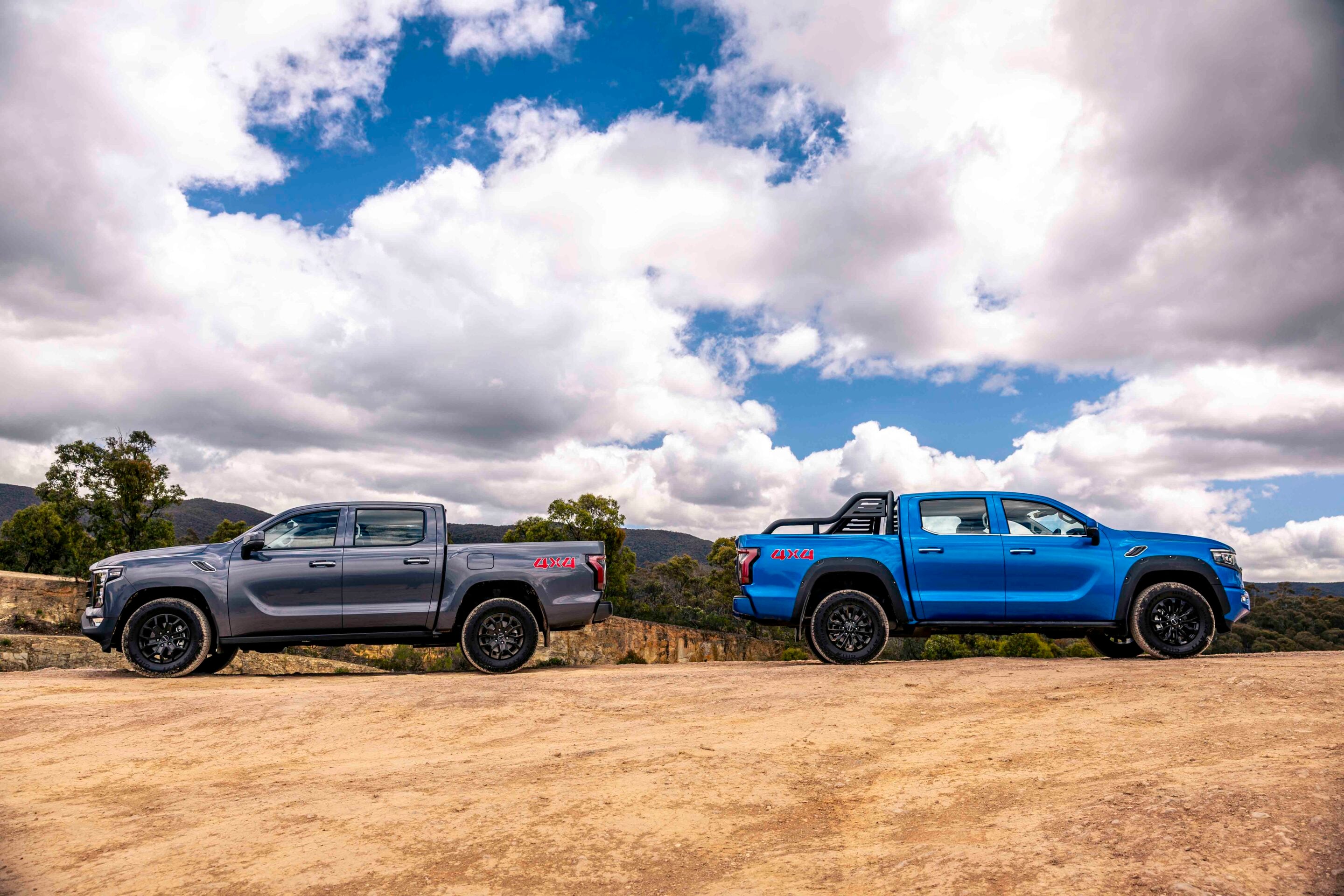
Foton Tunland pricing and model range
- V7-C 4×2: $39,990
- V7-C 4×4: $42,990 – Adds four-wheel drive, rear differential lock and additional drive modes
- V9-L 4×4: $45,990 – Adds multi-link rear suspension
- V9-S 4×4: $49,990 – Adds front and rear differential locks, panoramic sunroof and extra tech
All prices are plus on-road costs.
Powertrain performance
Both the V7 4×4 and V9-L 4×4 variants are powered by the same 120kW/450Nm 2.0-litre four-cylinder turbo-diesel backed by the popular ZF eight-speed automatic and a dual-range transfer case that also offers a 4×4 Auto mode. Both variants run a rear diff lock but no front locker, and drive modes include Eco, Standard, Sport, Sand, Mud and Snow.
All Tunlands run a 48-volt hybrid system. This is what some manufacturers call a mild-hybrid setup, although Toyota doesn’t apply the hybrid label to the 48-volt system in its diesel models. The system doesn’t offer EV-only propulsion and can’t be charged manually from an external source.
For a simple mild-hybrid system, it was surprising to feel the heavy deceleration from the battery-regeneration function in the driveline. It’s also a bit annoying, as it changes the way the vehicle coasts when you lift off the throttle.
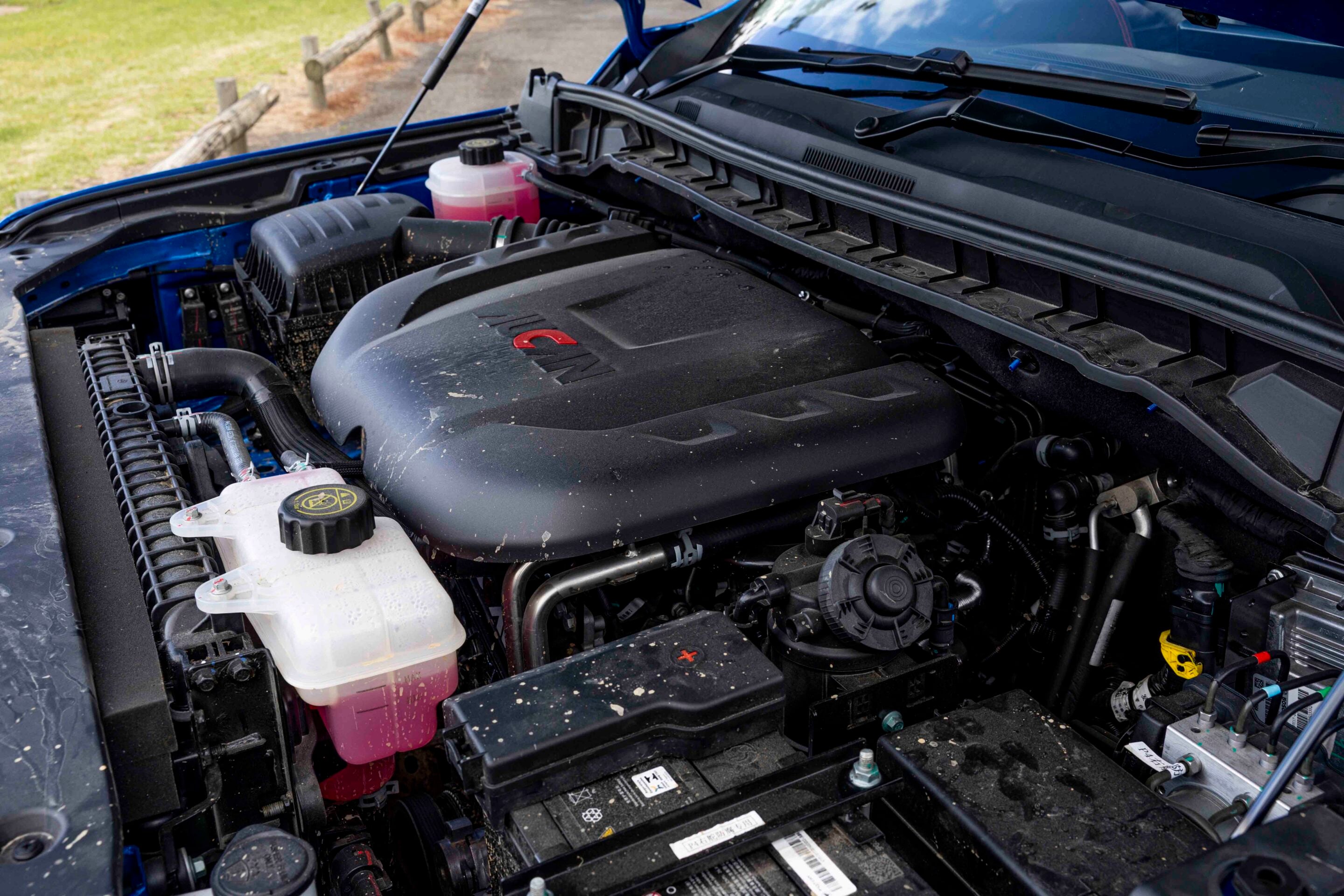
While this new 2.0-litre engine isn’t manufactured by Cummins, as the previous 2.8 was, it’s claimed to have been co-developed with Cummins, which operates a diesel engine manufacturing facility in Beijing as part of a joint venture with Foton. The drivetrain’s performance reflects its modest outputs, but it gets the unladen Tunland along well enough. It’s no Ford Bi-Turbo in terms of acceleration, but it is relatively refined thanks to good cabin insulation.
We recorded slightly better fuel consumption in the V7 than the V9, although the V7 covered around 300km of highway running, while the V9 spent its time around town and on bush tracks.
The ZF auto offers little to complain about, and it’s pleasantly aided by paddle shifters behind the steering wheel for manual gear selection. A small gripe is that when engine speed drops below 1500rpm it creates a noticeable thrumming in the cabin. Because the transmission always shuffles into top gear for maximum efficiency, anything under about 90km/h triggers the thrumming as soon as it selects eighth. Yes, you can tap it back to seventh using the paddles, but it quickly shifts back to top. It’s not an issue at higher road speeds, but it’s much more noticeable around town.
Interior tech and comfort
The Tunland sits at the larger end of the midsize-ute spectrum, and that’s obvious once you climb inside – there’s plenty of room for passengers in both the front and rear rows. The seat trims are faux leather and on the firm side, with manual adjustment in the V7. The rear seat squabs fold upwards to create some handy storage space when they’re not occupied.
Ahead of the driver is a 12.3-inch digital instrument cluster, while a 14.6-inch multimedia screen dominates the centre of the dash. The system supports wired Apple CarPlay and Android Auto and includes in-built navigation. Connecting a phone for CarPlay requires finding the USB ports hidden under the centre console, and both are USB-A type only.
The V7 runs single-zone air conditioning along with manual adjustment for the seats and folding mirrors. The V9 adds power-folding mirrors, dual-zone A/C, power-adjustable and heated front seats, wireless phone charging and a 220V outlet for rear passengers.
Some of the controls operate in slightly unusual ways, but you soon get used to them after a week or so behind the wheel.
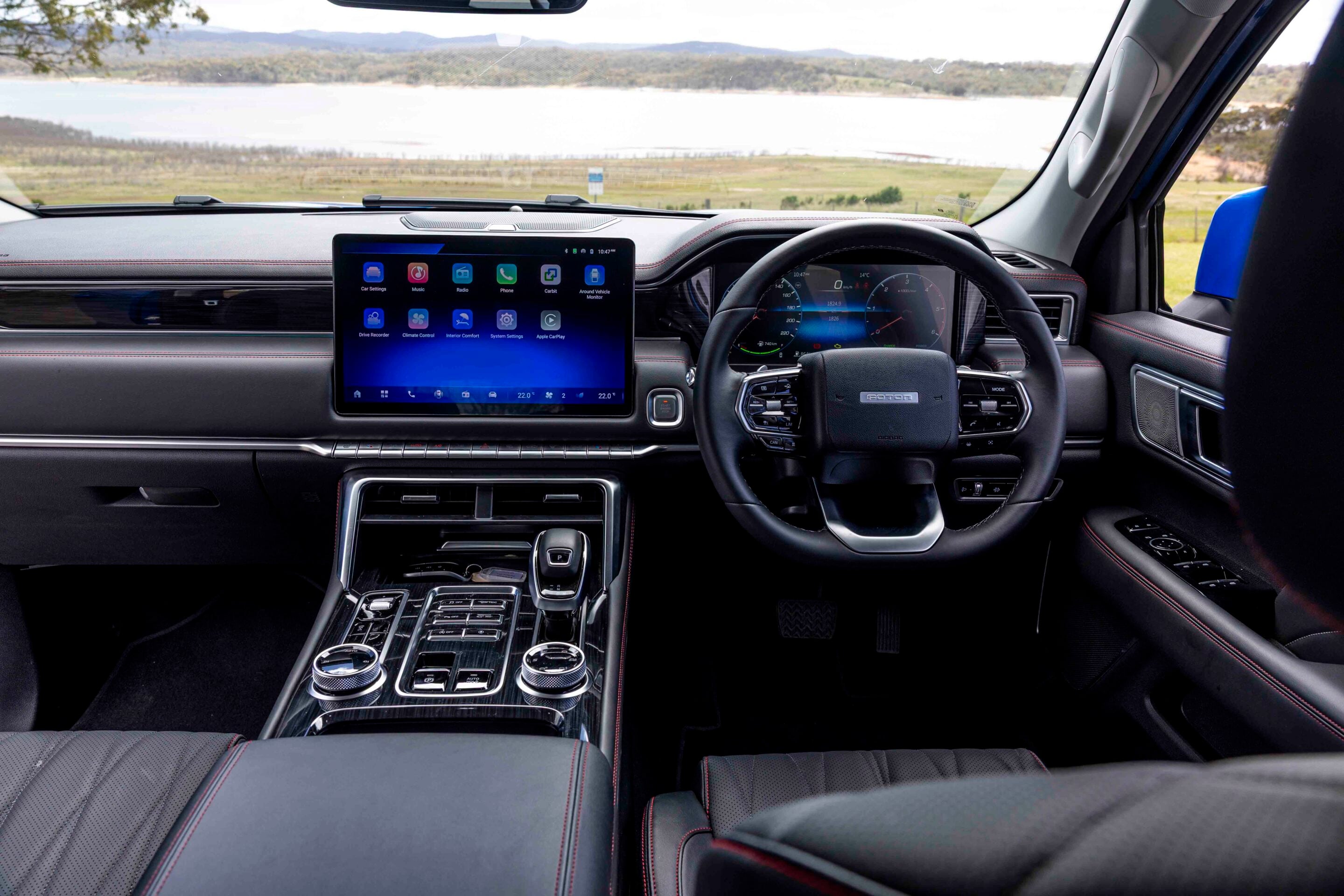
Safety kit
Safety-wise, the V7 is equipped with ESP, ABS, EBD, ETC, HDC and front and rear parking sensors.
ADAS features include Autonomous Emergency Braking with pedestrian and cyclist detection, Front Collision Warning, Lane Departure Warning, Pedestrian Collision Warning, Lane Keep Assist, Lane Centring Control, Traffic Sign Recognition, Blind Spot Detection, Rear Cross Traffic Alert and Trailer Stability Assist.
We found the Lane Centring Control particularly annoying, although it can thankfully be deactivated via a button on the steering wheel. The parking sensors and collision warning systems also caused issues off-road, occasionally preventing us from reversing when we needed to.
You can’t drive the Foton until the seatbelt is clicked on, which shouldn’t bother most users but becomes an irritation when shuffling vehicles for photos — and I reckon farmers will hate it too. You also can’t switch the engine off until the transmission is in Park. It’s nanny-grade over-complication of what should be simple actions.
Another annoyance around town is the Tunland’s habit of reducing the audio volume when you’re turning corners or in proximity to other vehicles. Listening to music is one way to ease the tedium of city traffic, but the system cuts the sound whenever there’s another car nearby – which is almost always in peak hour. Frustrating, to say the least.
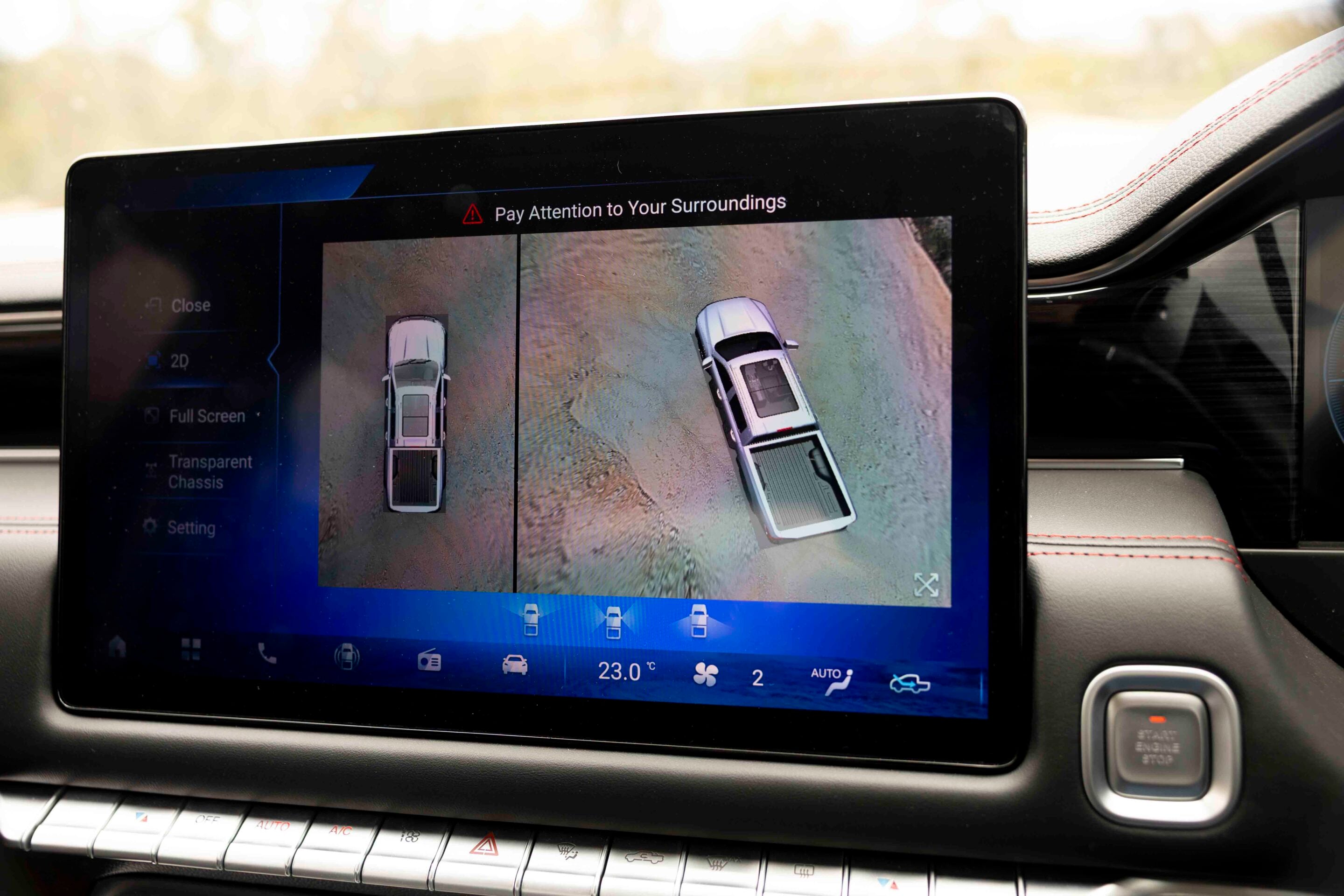
On- and off-road performance
My initial thoughts after picking up the V7 4×4 were that the engine is very quiet, the power modest and the suspension firm – often jarringly so on rough roads. By the time I’d negotiated traffic, with the audio cutting in and out due to nearby vehicles, I couldn’t wait to climb out. I appreciated the big cabin and the large screens, but some of the systems simply weren’t logical.
We copped some warm weather during our time with the Fotons, so I set the climate control to my usual 23-degree Auto setting, but the system couldn’t maintain a consistent temperature. It would blow cold air one minute and hot the next – up and down with no real stability, unlike most modern climate-control setups.
It was the same story on the highway at first, with the cruise control taking some fiddling to get working, but once activated and understood, it performed well. The suspension also settled at highway speeds, and the Tunland comfortably knocked over a couple of hours on the open road.
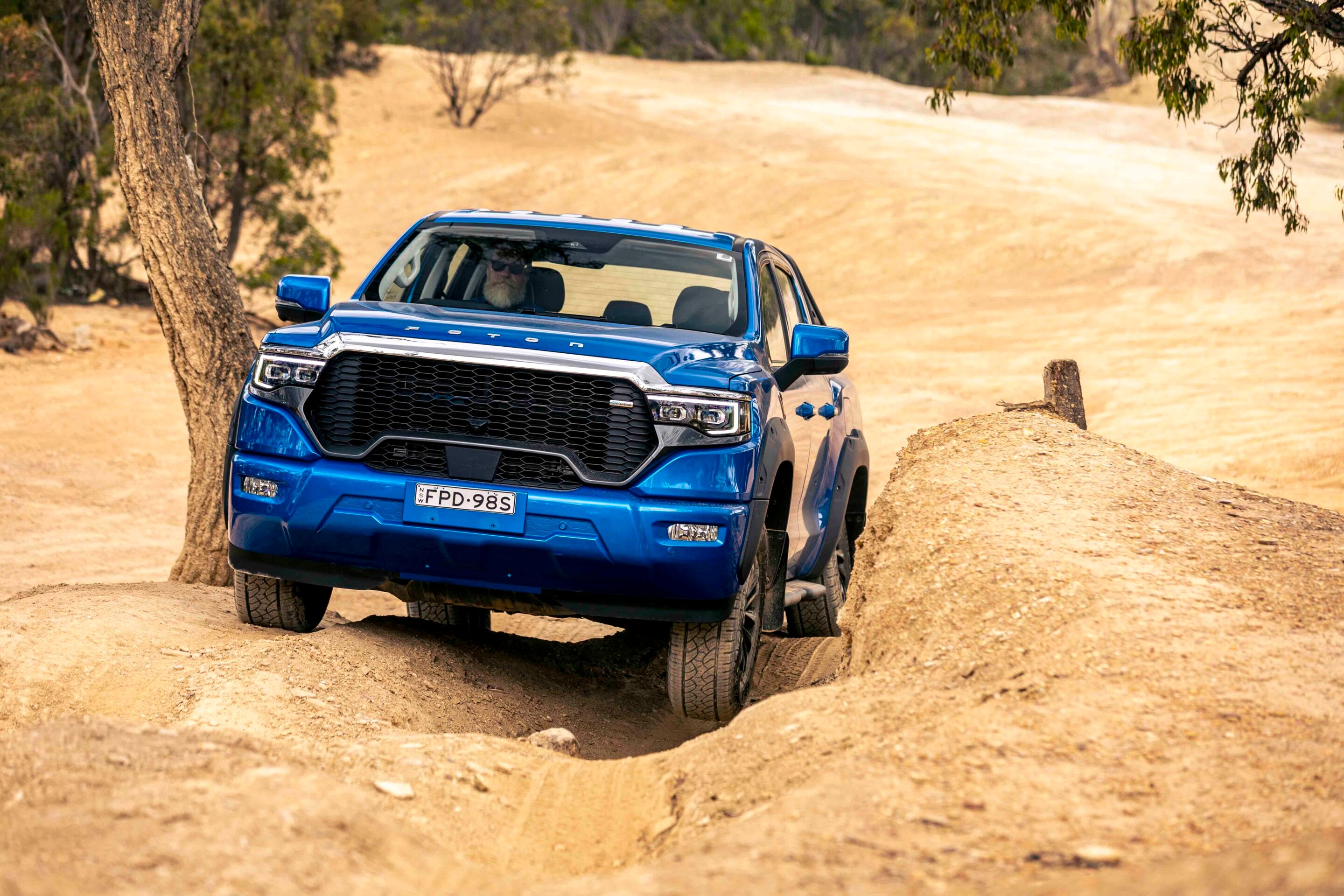
The V9 instantly feels softer and more compliant thanks to its coil-sprung rear suspension, making it noticeably more comfortable for day-to-day driving. The difference between the two setups was also evident on gravel tracks, where the V9 remained more composed while the V7 felt firmer.
The V7 performed better on the rutted hill climbs than the V9, with the leaf-sprung rear end offering enough travel and traction to scrabble up in low range without needing the rear diff lock. The V9, in contrast, simply spun its wheels in a cloud of dust regardless of the drive mode selected, and only made it up once we activated the RDL. Traction control alone wasn’t enough – something that isn’t usually the case with most utes of this ilk.
At first, I assumed the vehicles must have had an auto-locking rear diff, as there was a lot of clunking from the rear end when driving around the pit in low range, almost as if the diff was locking and unlocking. But then we discovered the RDL button on the console. The front and rear lockers fitted to the V9-S would certainly be appreciated for regular off-road use in a Tunland.
Verdict
Ateco Automotive is a major company with a long history of distributing car brands in Australia and New Zealand, so you’re not dealing with a small, unproven player if you’re considering a Foton purchase. The Tunland comes with a seven-year/unlimited-kilometre warranty, up to seven years of Foton Roadside Assistance and seven years of capped-price servicing.
The V7 and V9 Tunlands offer buyers a choice of two distinct looks. They’re big and well equipped, even if some of the tech takes a bit of getting used to and isn’t always logical in the way it operates.
They’re clearly aimed at the budget-conscious 4×4 ute buyer – a segment that’s rapidly expanding, largely due to the influx of new Chinese alternatives.
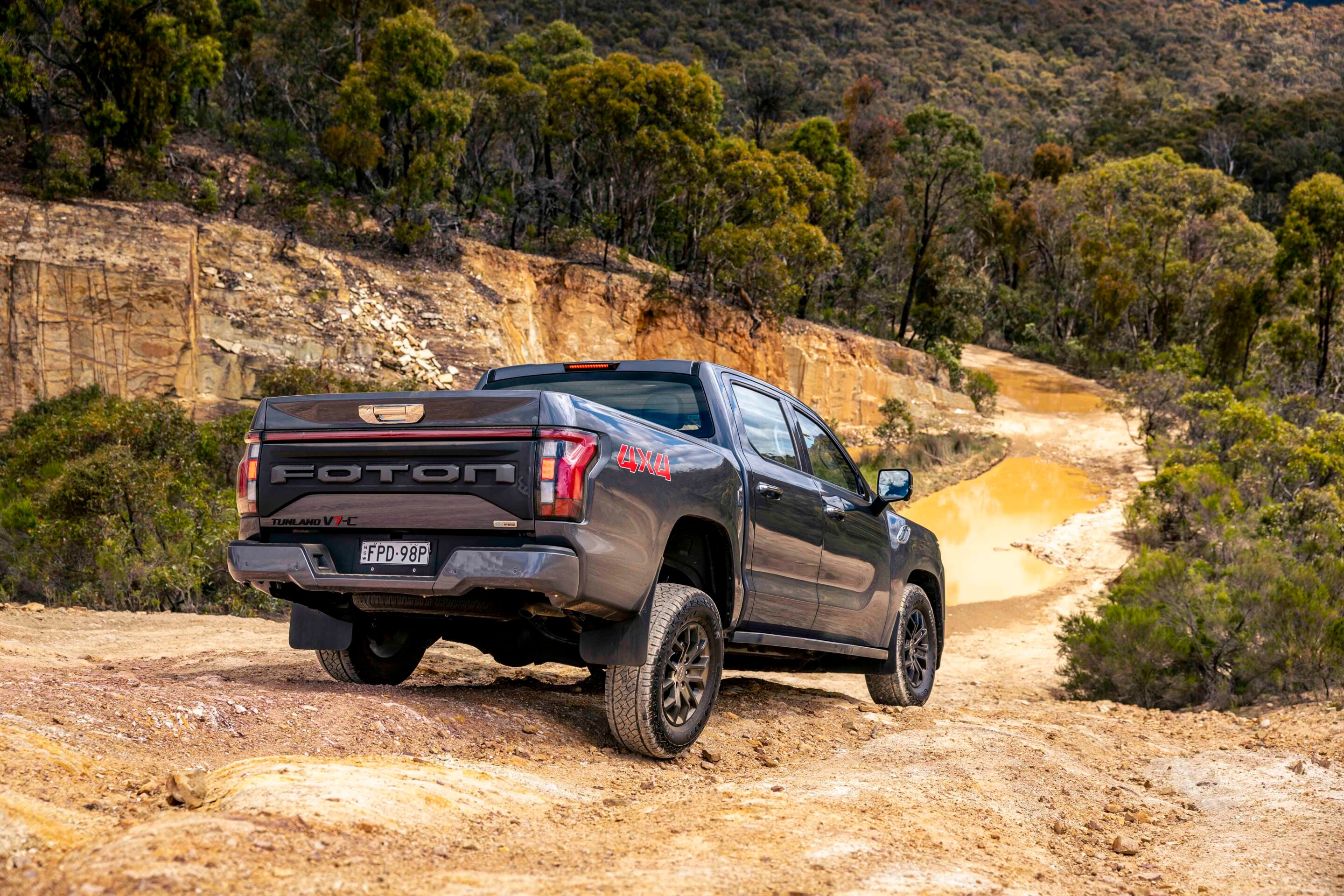
Specs
| Tunland V7-C | Tunland V9-L | |
|---|---|---|
| Price | $42,990 +ORC | $45,990 +ORC |
| Engine | 4-cylinder, turbo diesel | 4-cylinder, turbo diesel |
| Capacity | 1969cc | 1969cc |
| Max power | 120kW @ 3600rpm | 120kW @ 3600rpm |
| Max torque | 450Nm from 1500Nm-2400Nm | 450Nm from 1500Nm-2400Nm |
| Transmission | 8-speed automatic | 8-speed automatic |
| 4×4 system | Dual range part-time with 4×4 auto AWD | Dual range part-time with 4×4 auto AWD |
| Construction | 4-door ute body and tub on ladder frame chassis | 4-door ute body and tub on ladder frame chassis |
| Front suspension | Wishbone IFS with coils | Wishbone IFS with coils |
| Rear suspension | Live axle with leaf springs | Live axle with multilink and coil springs |
| Tyres | 265/70R18 | 265/70R18 |
| Weight | 2311kg | 2311kg |
| GVM | 3335kg | 3306kg |
| GCM | 6835kg | 6806kg |
| Towing capacity | 3500kg | 3500kg |
| Payload | 1024kg | 995kg |
| Seats | 5 | 5 |
| Fuel tank | 76L + 2L AdBlue | 76L + 2L AdBlue |
| ADR fuel consumption | 8.0L/100km | 8.0L/100km |
| On-test fuel consumption | 11.3L/100km | 11.8L/100km |
| Approach angle | 28 | 28 |
| Ramp-over angle | 21 | 21 |
| Departure angle | 26 | 26 |
| Ground clearance | 240mm | 240mm |
| Wading depth | 700mm | 700mm |
If Christmas has crept up on you and you’re still trying to work out what to buy your dad, you’re not alone.
And if he’s the kind of fella like a lot of the dad’s here at 4X4 Australia he already owns all the recovery gear, the camping kit and more torches than anyone needs. That’s where we reckon a 12-month 4X4 Australia magazine subscription is just the gift for him. It’s a gift that fits perfectly with how so many 4×4-loving dads actually spend their time – reading through a magazine with a coffee before a trip, flicking through pages at camp while the billy boils, or planning the next touring route from the comfort of the caravan.
Unlike a one-off gift, a subscription keeps turning up month after month, delivering fresh ideas, reviews and comparisons, new destinations and practical advice long after Christmas Day has passed.
At the newsagent, 4X4 Australia retails at $12.99 an issue, which adds up to $156 across 12 issues. A 12-month subscription costs just $109, delivered straight to the door. It’s better value and far more convenient, especially when time is running out before Christmas. And heading into 2026, there’s never been a better time to be a 4X4 Australia reader.
Over the next year we’ll be sharing even more epic Australian touring stories, exploring the tracks, camps and destinations that make this country so special to travel by four-wheel drive. Whether your dad prefers remote outback touring, coastal escapes or relaxed campervan adventures, the stories are about real trips and real experiences he can actually picture himself doing.
We’ll also be stepping up our gear testing, helping readers choose the right suspension, tyres, touring accessories and camping gear for their setup. Whether that’s a dual-cab ute, a wagon or a camper in tow.
And for the dads who love their vehicles, 2026 will deliver more head-to-head 4×4 comparisons than ever before, offering clear, real-world insights to help make smarter buying decisions.
A 4X4 Australia subscription isn’t just something to read once and put aside. It’s inspiration for the next trip, the next camp and the next great Australian adventure. If you’re stuck for a last-minute Christmas gift this year, this is one that your dad will genuinely enjoy while he’s parked up at camp or dreaming about where the next trip might take him.
Ford has confirmed its current battery-electric F-150 Lightning will be discontinued and replaced by a new extended-range electric vehicle (EREV) version – signalling a clear shift in Ford’s EV strategy.
An Extended-Range Electric Vehicle (EREV) is essentially an electric vehicle with a built-in generator (usually powered by petrol or diesel). The next-gen Lightning will use this generator-assisted electric drivetrain rather than relying solely on a large battery. It’s still driven entirely by electric motors, but the onboard generator extends the total driving range to an estimated 700 miles (1127km).
“The F-150 Lightning is a groundbreaking product that demonstrated an EV pickup can still be a great F-Series,” said Doug Field, Ford’s chief EV, digital and design officer. “Our next-generation F-150 Lightning EREV will be every bit as revolutionary.
“It delivers everything Lightning customers love – near instantaneous torque and pure electric driving. But with a high-power generator enabling an estimated range of 700+ miles, it tows like a locomotive. Heavy-duty towing and cross-country travel will be as effortless as the daily commute.”
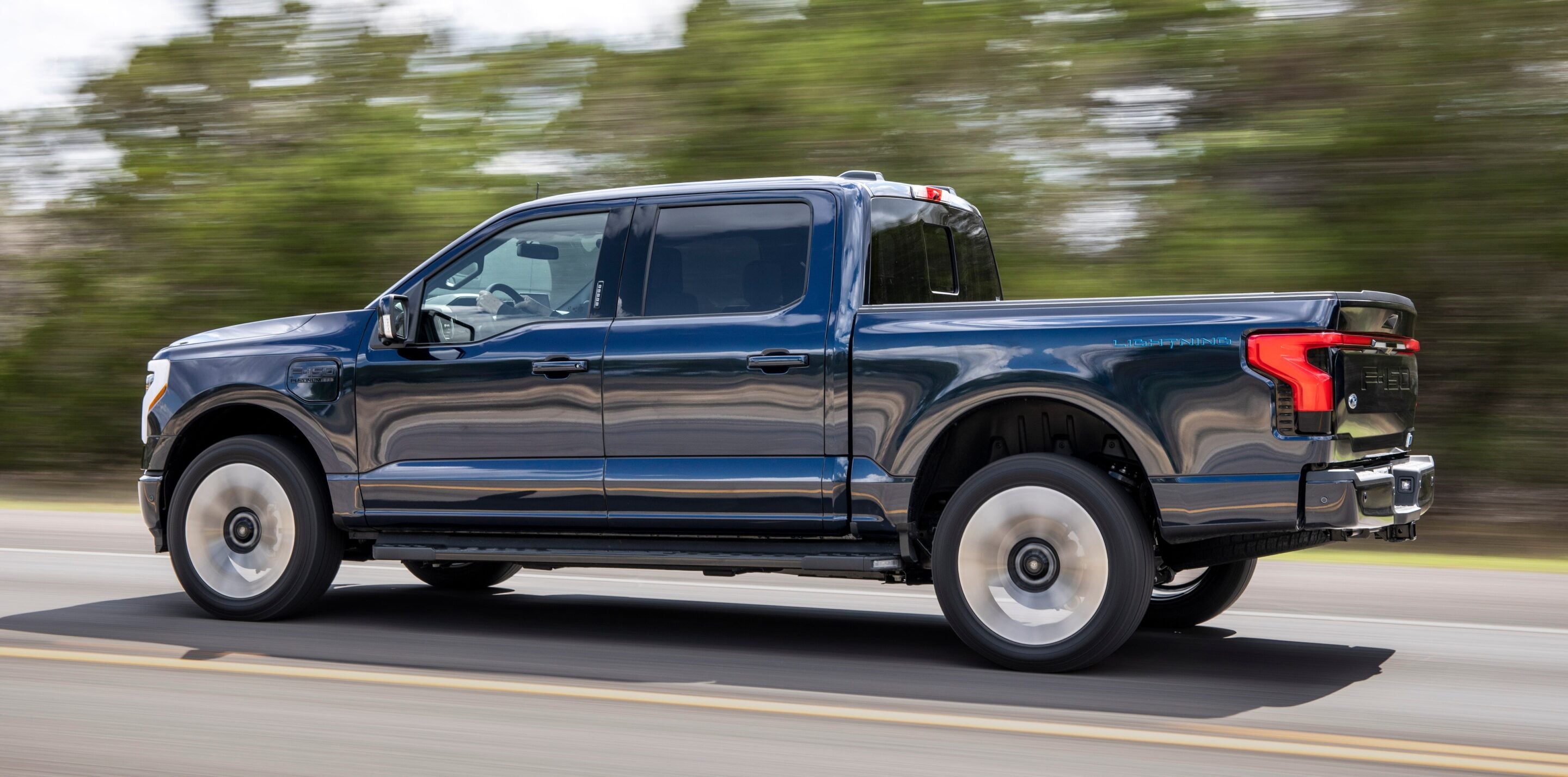
Exportable power will remain a feature, allowing the Lightning to run tools, campsite equipment, or even provide backup electricity for a home.
The new F-150 Lightning EREV will also be assembled at Ford’s Rouge Electric Vehicle Center in Dearborn, Michigan. Detailed specifications, launch timing and market availability have yet to be announced, and there’s no confirmation of right-hand-drive production or Australian availability.
While never officially part of the Ford Australia line-up, the current battery-electric Ford F-150 Lightning has dual electric motors with all-wheel drive, producing up to 433kW and 1050Nm. The extended-range battery offers around 515km of EPA-estimated range. Payload is up to 907kg and towing up to 4536 kg with the Max Trailer Tow package. It features Ford’s Pro Power Onboard and DC fast-charging up to around 150kW.
Volkswagen has confirmed details of its 2026 Amarok line-up for Australia, with the local range continuing to shift toward V6-powered variants and the introduction of the Dark Label Edition at the top end.
Built in South Africa alongside the Ford Ranger, the second-generation Amarok remains closely related under the skin, but Volkswagen Australia’s local line-up continues to skew toward higher-grade V6 variants rather than entry-level models. That approach is reflected in the simplified engine offering for 2026, with V6 models expected to make up the majority of local sales.

The headline addition is the Amarok Dark Label, reviving a name previously used on overseas Amarok variants and first flagged by Volkswagen earlier this year as a potential addition for Australia, will be powered exclusively by the 3.0-litre V6 turbo-diesel producing 184kW and 600Nm. It is paired with a 10-speed automatic transmission and Volkswagen’s permanent 4MOTION all-wheel-drive system. Braked towing capacity remains at 3500kg, keeping the Amarok a competitive shortlisted option for buyers towing caravans, boats and larger work trailers.
While the Dark Label introduces black exterior detailing, unique wheels and darker interior finishes, there are no mechanical changes compared to other V6 Amarok variants. Chassis tuning, suspension design and underbody protection are carried over, meaning off-road capability is unchanged for 2026.
Volkswagen has also confirmed the 2.0-litre bi-turbo diesel has been removed from most of the Australian range. A single-turbo four-cylinder diesel remains available in entry-level Core trim, while higher grades will be V6-only.
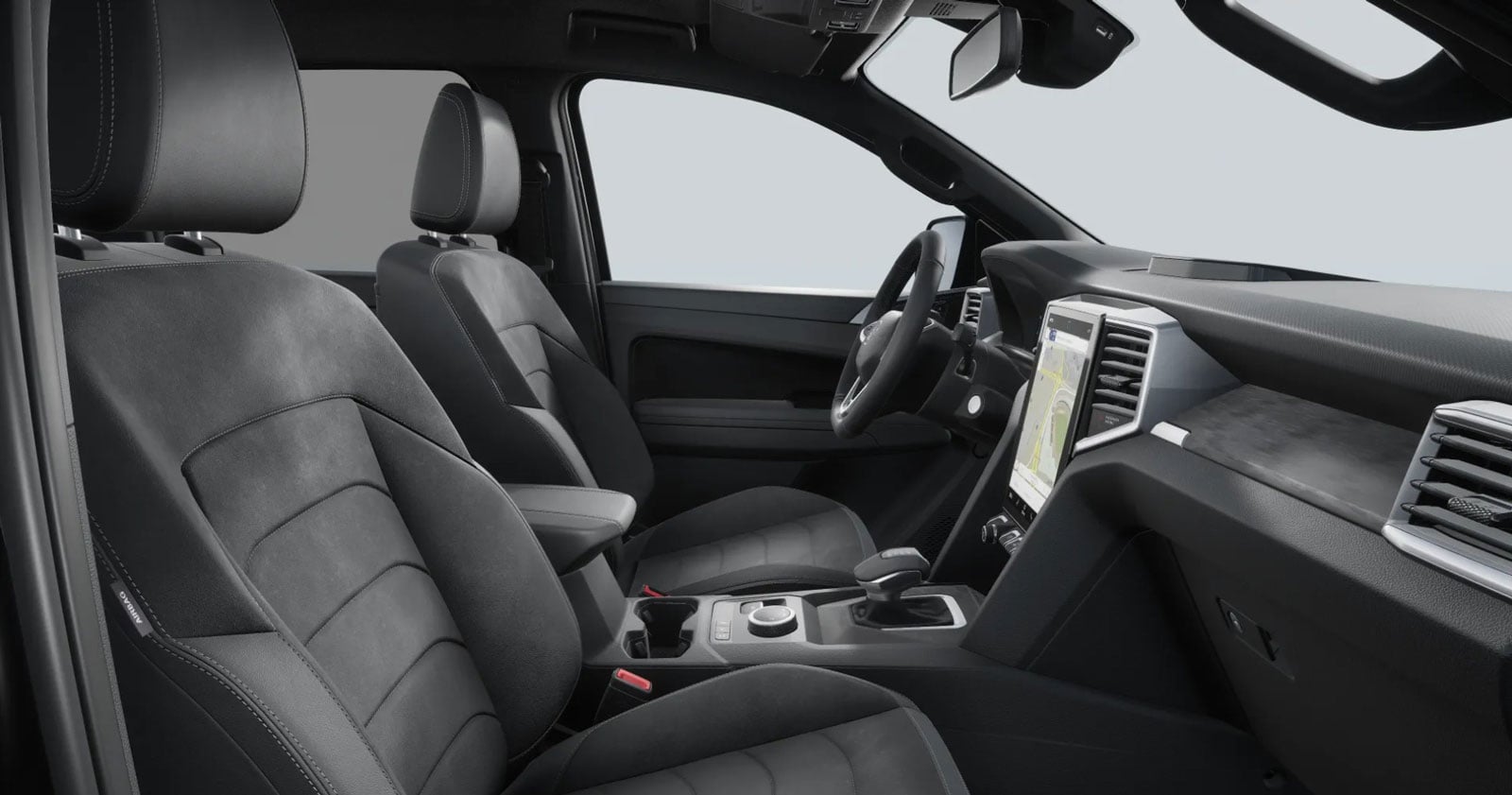
From a 4×4 perspective, V6 Amarok models continue to use a full-time all-wheel-drive system with selectable drive modes for varying terrain. Payload remains competitive at around the one-tonne mark depending on variant, allowing owners to balance touring accessories with towing loads. Tray and tub dimensions are unchanged, maintaining compatibility with existing canopies, drawer systems and touring accessories already on the market.
The Amarok PanAmericana continues as the most off-road-oriented factory option, retaining its all-terrain tyres, unique exterior treatment and V6 drivetrain. No specification changes have been announced for that variant as part of the 2026 update.
Volkswagen did not enter the Amarok into the 2025 4×4 Australia Ute of the Year program, which is a missed opportunity, as on paper the V6 Amarok has the credentials to give the Ford Ranger V6 a genuine run for its money.
Pricing for the 2026 Amarok range will be confirmed closer to its Australian on-sale date, with local deliveries expected later this year.Volkswagen has locked in its 2026 Amarok line-up for Australia, led by V6 models and a new Dark Label Edition.
Unconfirmed reports, led by the Wheelsboy YouTube channel, suggest the Bronco New Energy – an electrified SUV built on a unibody platform – could be exported to markets including Australia, Southeast Asia, South America and the Middle East. Ford has not confirmed this.
The Bronco New Energy five-seater is a unibody SUV, unlike the ladder-frame T6 architecture used for the Ranger, Everest and Bronco. It is designed for China’s new-energy market, with an emphasis on range and tech rather than traditional body-on-frame off-road durability.
It is the largest Bronco produced so far. Dimensions are listed at 5025mm long, 1960mm wide and 1825mm tall, with a 2950 mm wheelbase. Ground clearance is around 220mm, and its wading depth is rated at 600mm. The vehicle is heavy, weighing up to 2630 kg, and it rides on a double-wishbone front and five-link rear suspension.
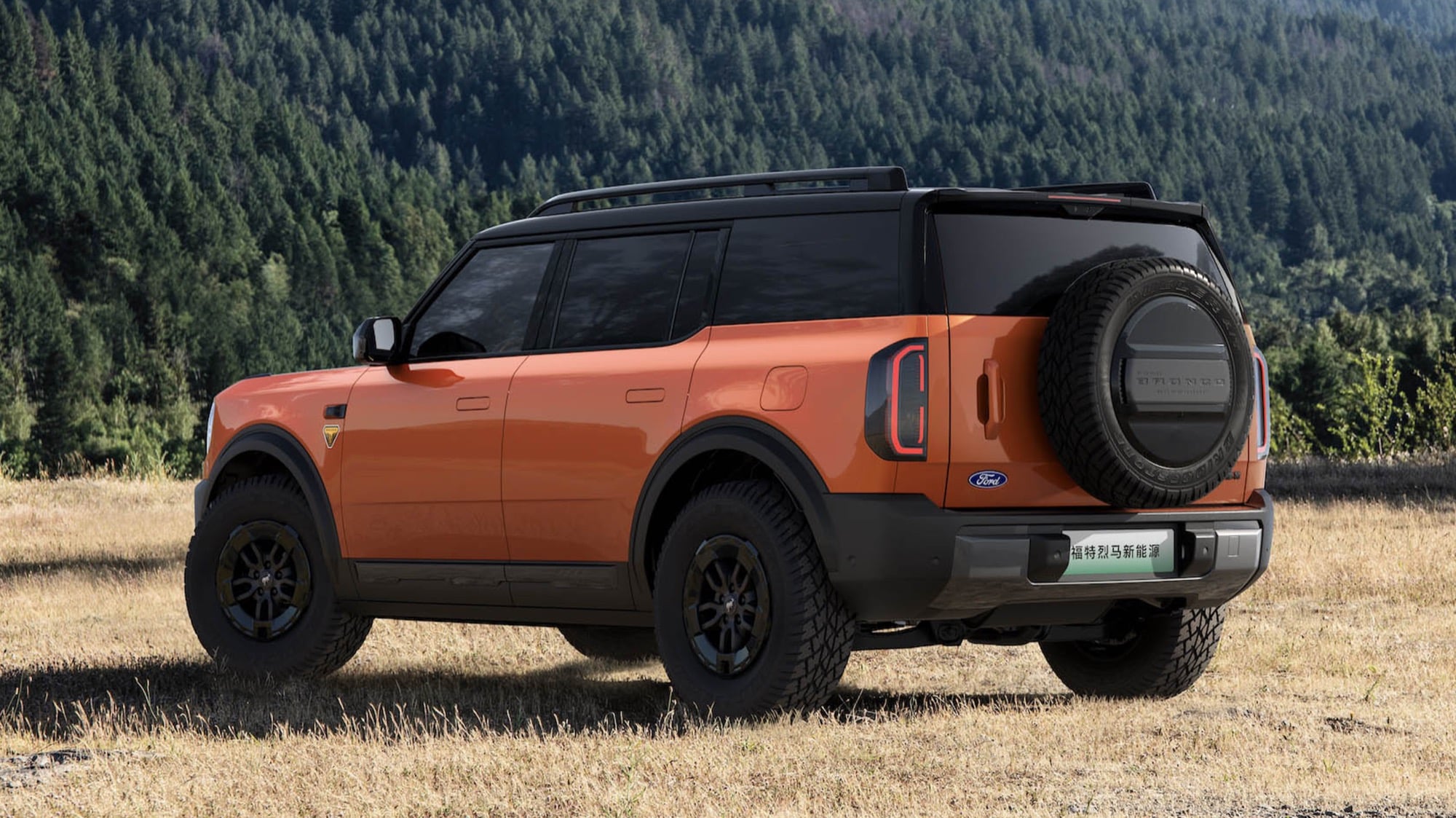
Reports suggest higher-spec variants could have locking front and rear differentials, multiple drive modes and a crawl function. If correct, this would give the SUV more off-road ability than most unibody EVs, though it may still lack the robustness of a ladder-frame vehicle.
There are two confirmed electrified options. The battery-electric (BEV) version has a 105.4kWh battery and dual motors with AWD. Reports suggest it produces around 332kW and 575Nm, with a CLTC range of 650 km.
The extended-range electric (EREV) version uses a 43.7kWh battery supplemented by a 1.5-litre turbo petrol engine that acts as a generator. Reports suggest it delivers around 310kW and 600Nm, with 220km of electric range and up to 1220km in total.
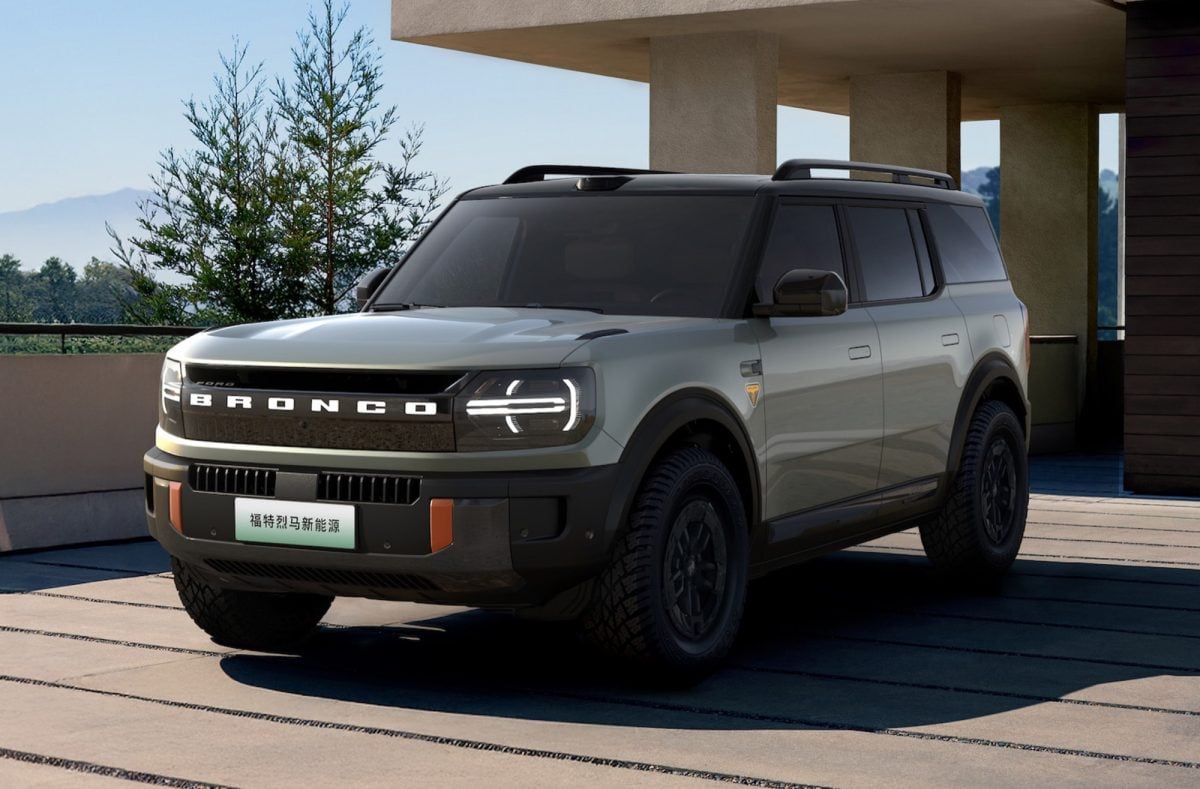
Confirmed features include an 8.8‑inch digital cluster and 15.6‑inch central touchscreen. Reports suggest higher trims may include an AR head-up display, built-in fridge, 21-speaker sound system, panoramic sunroof, pop-top roof, and heated/ventilated/massage front seats.
Safety is supported by a confirmed LiDAR, radar and sensor suite, providing semi-autonomous functions and collision avoidance.
BLUETTI, a technology pioneer in clean energy, is launching its new Elite 300 portable power station in Australia on December 15.
As the most compact and cost-efficient 3kWh power station available, the Elite 300 packs serious power into a manageable package, ideal for Australian homes as a home battery backup, caravans, and off-grid setups.
Introducing BLUETTI Elite 300: 3kWh power at 2kWh portability
The Elite 300 holds 3,014Wh of capacity but weighs just 26.3kg—roughly as heavy as those smaller 2kWh units. This makes it easily movable between the house, caravan, and campsite without the bulk associated with 3kWh LFP power stations.
The 2,400W continuous output handles most home appliances, from fridges and microwaves to laptops and ice makers. When high-draw devices like kettles or ovens need extra muscle, the Power Lifting mode pushes its output to 4,800W with ease.
Multiple ports deliver genuine plug-and-play convenience: 2 AC outlets, 2 USB-A ports, 2 USB-C ports (100W and 140W), a cigarette lighter socket, and a robust 12V/30A port. This variety ensures reliable electricity for virtually any device at home, work, or play.
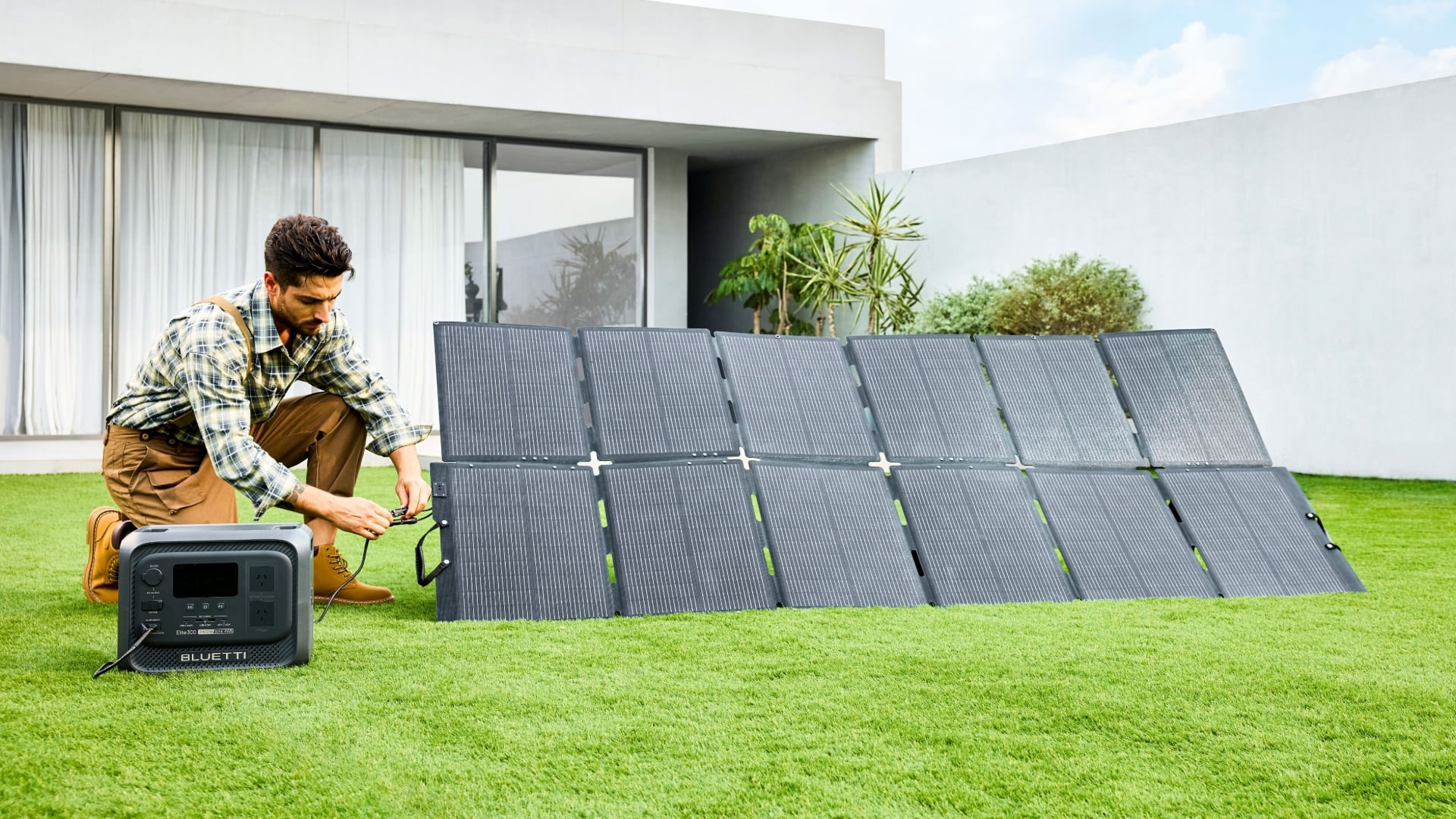
Faster and smarter home back-up power
Blackouts strike without warning — summer storms, bushfires, grid failures. The Elite 300 delivers uninterruptible power (UPS) in just 10 ms, making it one of the fastest-reacting home battery backups available. This home battery keeps fish tank filters running, gaming computers online, and fridges preserving food without interruption.
Power management is more intelligent with the updated BLUETTI app that goes beyond basic monitoring and remote control. Operating via Wi-Fi and Bluetooth, the new Timer Switch function enables customized power schedules to suit different lifestyles.
Households can program air conditioners to cool rooms before arriving home on sweltering summer days, or schedule pet feeders during extended holidays. They can also wake up or sleep units remotely from any location, taking full charge of their energy usage.

Power freedom for caravans and off-grid adventures
Engineered with road adventures in mind, the Elite 300 battery backup includes a 12V/30A RV port that powers onboard systems like water pumps, lights, and diesel heaters, perfect for RVs, camper trailers, motorhomes, and boats.
Charging is quick and flexible for on-the-road power. Its 2,300W AC fast charging fills the battery in 1.6 hours. Combining AC with solar input reaches up to 2,800W for a 1-hour full recharge—an industry-leading speed.
Off the beaten track with solar panels, the Elite 300 captures up to 1,200W of sunlight, providing steady power for refrigeration, lighting, and cooking. Road trippers and overlanders can also top it up from their vehicles using the Charger 1 alternator charger, recharging 6 times faster than conventional car chargers.

Pricing and availability
The Elite 300 launches on December 15 via BLUETTI Australia’s official website at a special introductory price of AUD $2,599, valid until December 31. Customers can use the code 4X4300 for an additional 6% launch discount.
Additionally, BLUETTI’s Christmas Sale is running from December 10 to December 25, offering discounts of up to 50% across its range of portable power stations and solar generators. Good time for Australians to secure reliable portable power for summer camping trips, beach weekends, or home backup peace of mind.
About BLUETTI
Founded in 2009, BLUETTI is a global leader in clean energy storage, providing reliable portable power stations, solar generators, and solar battery systems for home backup and outdoor activities. With a dedicated R&D team and a 40,000m² certified manufacturing facility, the company is making innovative power solutions accessible to everyone. Through continuous innovation and a customer-centric approach, BLUETTI has been trusted by over 4 million users across 110+ countries and regions.
Despite the Toyota RAV4 topping the sales charts in November, it was another steady month for the LCV segment, including the PU/CC 4×4 category.
Broadly, the LCV market was up 2.5 per cent for the month and 0.5 per cent for the year, with the PU/CC 4×4 segment up 1.7 per cent monthly and 0.9 per cent year-to-date. The top-selling overall models were the Toyota RAV4, Ford Ranger, Toyota HiLux, Chery Tiggo 4 Pro and Isuzu D-MAX.
The Ranger was the best-selling 4×4 in November, shifting 4515 units. Remarkably, Toyota sold 3087 Hilux models despite the launch of an all-new model due in showrooms shortly. The Nissan Navara lagged, with only 256 4×4 units sold – its new model can’t come soon enough.
Relative newcomers to the 4×4 market also struggled. The Kia Tasman registered just 556 sales for the month, while the MGU9 and its LDV Terron9 twin sold only 163 and 114 units respectively.
In the SUV/wagon segment, the Ford Everest, Isuzu MU-X and Toyota Prado once again led, with 2097, 1602 and 1481 vehicles sold respectively. The 300 Series outsold the Patrol by 921 units to 400.
In the upper large segment, the Chevrolet Silverado (including HD variants) led with 381 sales, followed by the RAM 1500 (191), Toyota Tundra (70) and Ford F-150 (59). Only 40 GMC Yukons departed dealerships in November.
| Best-selling 4x4s in November 2025 | |
|---|---|
| 1. Ford Ranger | 4515 |
| 2. Toyota HiLux | 3087 |
| 3. Ford Everest | 2097 |
| 4. Isuzu MU-X | 1602 |
| 5. Isuzu D-MAX | 1561 |
| 6. Toyota Prado | 1481 |
| 7. BYD Shark | 1217 |
| 8. Mitsubishi Triton | 1216 |
| 9. Mazda BT-50 | 922 |
| 10. Toyota LC300 | 921 |
Overall, Australia’s new vehicle market recorded 97,037 sales in November, down 2.1 per cent on the same month last year. However, plug-in hybrid electric vehicles (PHEVs) stood out, reaching 4768 sales for the month – an 83.3 per cent increase on November 2024. Year-to-date PHEV sales are up 130.6 per cent to 47,565 units, driven by more models and rising consumer awareness. Battery electric vehicles (BEVs) also gained ground, making up 9.1 per cent of November sales, up from 6.5 per cent last year.
“Plug-in hybrids continue to gain momentum because they give drivers the benefit of electric travel for daily use while removing range concerns. Consumers are looking for flexible, low-emission choices and brands are meeting that demand,” said Tony Weber, Federal Chamber of Automotive Industries chief executive.
Petrol vehicles continued to decline, down 18.1 per cent for the month and 9.5 per cent year-to-date, while diesel sales fell 9.5 per cent monthly and 1.6 per cent year-to-date. Passenger cars saw the sharpest drop, down 15.7 per cent in November and 23.2 per cent year-to-date, while SUVs grew 5.4 per cent and now represent more than 60 per cent of the market.
“Petrol’s decline is part of a long-term global market transition. We are seeing strong interest in hybrid and plug-in hybrid vehicles, and this trend will only accelerate as more models arrive.
“The choice of BEVs provided by manufacturers is growing, with 110 models in the market in 2025. We encourage governments to continue to invest in recharging infrastructure to support growth in consumer confidence in this new technology,” added Weber.
Toyota once again led overall sales with 19,787 vehicles, followed by Ford (7407), Mazda (6979), Hyundai (6707) and Kia (6510).
| Best-selling 4x4s YTD (as of November 2025) | |
|---|---|
| 1. Ford Ranger | 48,439 |
| 2. Toyota HiLux | 41,255 |
| 3. Toyota Prado | 27,779 |
| 4. Ford Everest | 24,012 |
| 5. Isuzu D-MAX | 19,466 |
| 6. BYD Shark | 16,398 |
| 7. Mitsubishi Triton | 14,918 |
| 8. Isuzu MU-X | 14,101 |
| 9. Toyota LandCruiser 300 | 10,947 |
| 10. Mazda BT-50 | 10,786 |
Slattery Auctions – a family-run Australian business for 25 years – puts an eclectic range of 4x4s under the hammer, from work-ready utes and off-road weekend warriors to classic Cruisers and fully equipped touring rigs.
Since its 2000 beginnings in truck and transport asset auctions, Slattery has grown into a national operator, connecting buyers and sellers across the country while staying true to its family-owned roots and leveraging deep industry experience.
Its ever-changing selection of 4×4 vehicles ranges from tough off-roaders to practical highway tourers and everything in between. Each listing makes it easier to find the right fit for your needs. A straightforward buying process combined with the ability to inspect vehicles makes it a relatively easy experience.
We’ve compiled some of the best vehicles currently under the hammer at Slattery Auctions. Let’s take a closer look 👇
2008 Toyota LandCruiser Workmate (ex-Ambulance)
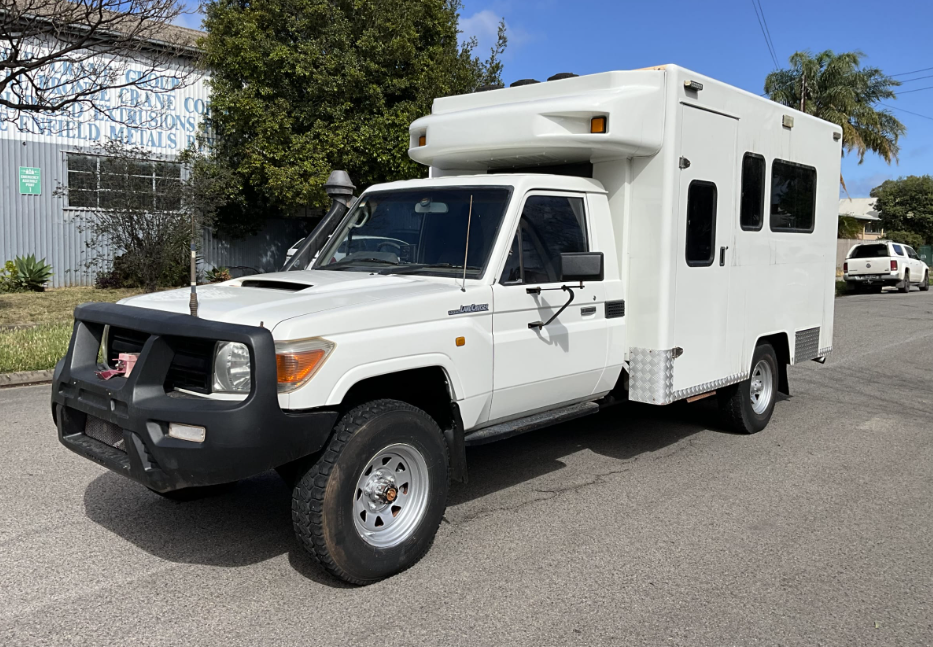
A 2008 Toyota LandCruiser Workmate ex-ambulance with just 41,129km on the odometer. It is a diesel-powered manual cab-chassis, with spring suspension, five seats and the 4.5-litre engine.
The vehicle comes with dual batteries, an onboard compressor, a GVM upgrade, and some remaining ambulance equipment, making it ideal for a camper conversion. Scratches and dents are visible, and an MR29 inspection is required for SA registration. It has no service history or owner’s manual.
- Total mileage: 41,129km
- Location: SA
- Auction ends: December 15 at 16:30 (AEDT)
2022 Toyota HiLux SR
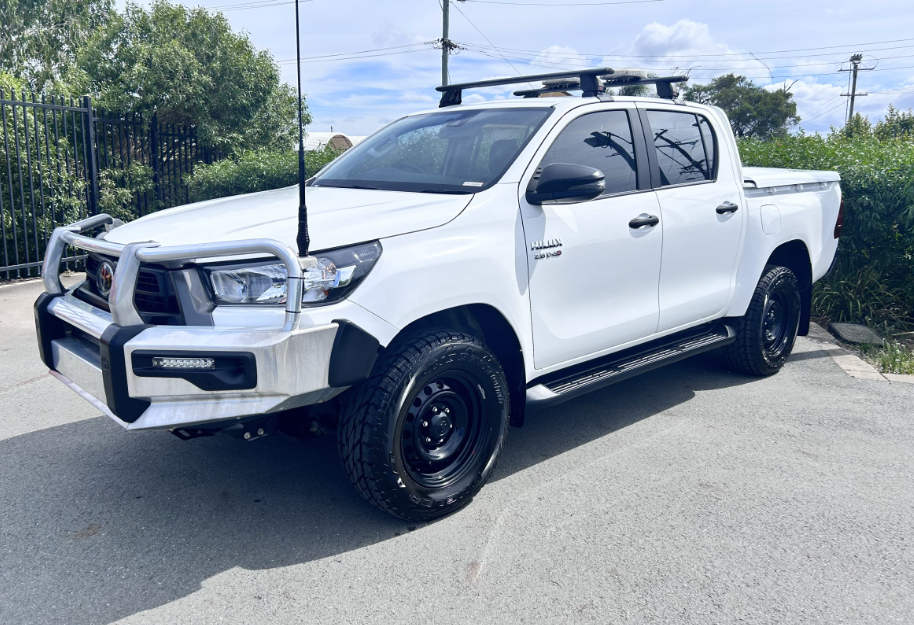
The 2022 Toyota HiLux SR 4×4 with 68,426km is powered by the 2.8L diesel engine paired with an automatic transmission.
It comes equipped with a bull bar, roof racks, hard lid, LED lightbar, and side steps. It has five seats, full logbook and service history, and master and spare keys. The body, trim, seats, carpet and paint are said to be in good condition, though scratches and dents are visible around the vehicle.
- Total mileage: 68,426km
- Location: QLD
- Auction ends: December 16 at 20:00 (AEDT)
2024 Ford Ranger Raptor
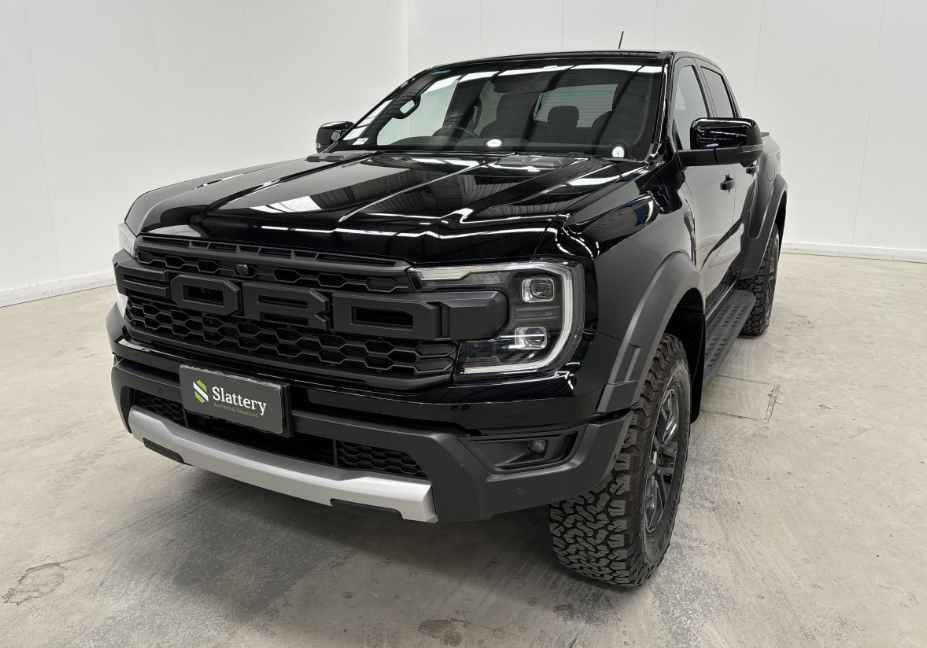
Finance repossession with just 15,747km travelled – highly desirable and extremely hard to come by at this low mileage!
It’s a 2024 Ford Ranger Raptor 4×4 with a 3.0 L V6 petrol engine paired to a sports automatic transmission. This five-seater comes with a master key and logbook, and has “fair” body, trim, seats, carpet, paint and brakes, showing multiple scratches, dents and minor interior stains. Plates are NSW dealer only, and service books are present but contain no entries.
- Total mileage: 15,747km
- Location: NSW
- Auction ends: December 16 at 20:00 (AEDT)
2024 Ford Ranger Raptor
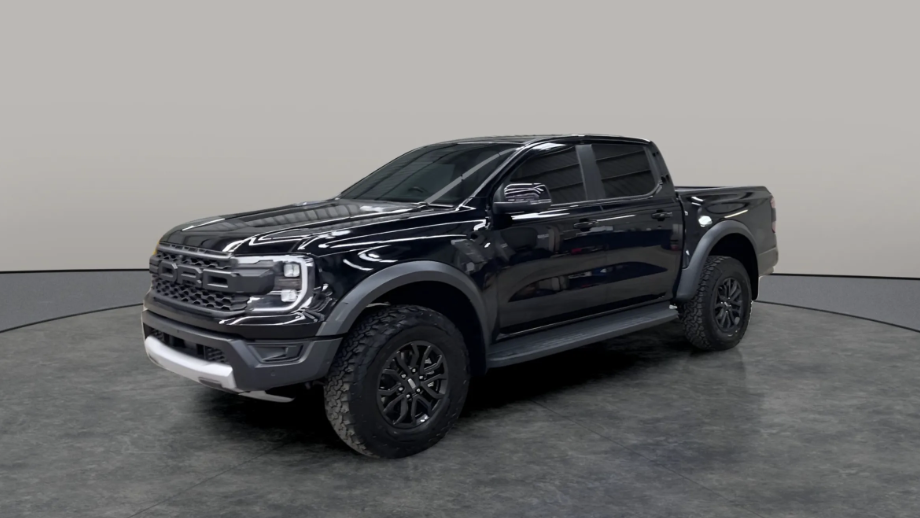
Another Ranger Raptor that has been financially repossessed. This one with just 48,357km on the clock.
This example comes with both master and spare keys and is said to be in good condition. The body, trim, carpet and overall condition is listed as “good”, with fair seats and visible scratches and dents around the vehicle. No logbook or service history is included, and the vehicle comes unregistered with no plates.
- Total mileage: 48,357km
- Location: VIC
- Auction ends: December 17 at 18:00 (AEDT)
Expired auctions 👇
2021 Toyota VDJ79R LandCruiser GXL
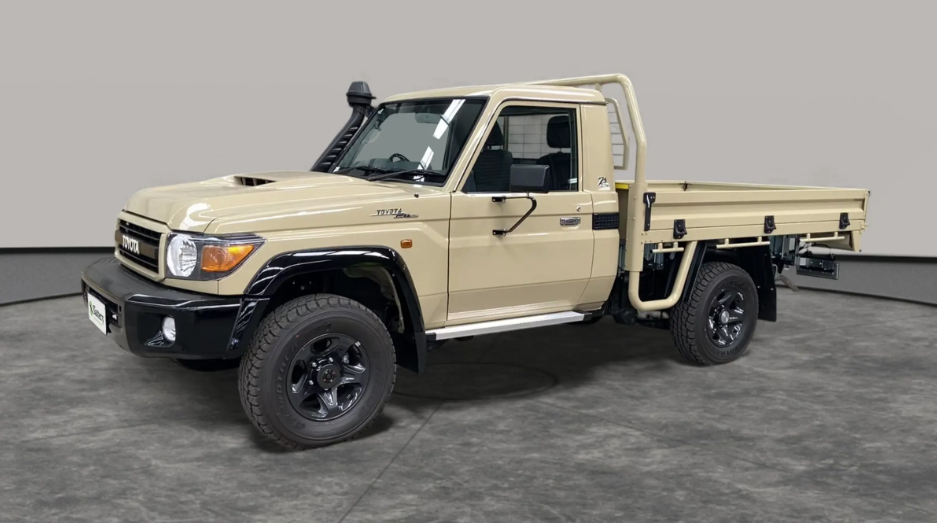
For anyone chasing a clean 79 Series, this 2021 LandCruiser GXL stands out as one of the tidier examples on the used market. With just 155km showing, it’s essentially delivery-fresh, offering the rare chance to buy a late-model 70 Series without the usual miles and wear and tear.
Under the bonnet is the proven 4.5-litre V8 turbo-diesel (1VD). Paired with a manual gearbox, leaf-spring rear and a proper four-wheel-drive system, it remains one of the few vehicles still built for hard work.
The single-cab body and cabin present in excellent condition, with paint, trim, seats, carpets and general fit-out all well above what you’d typically see on the used market. The tyres are rated excellent across all four corners and even the spare is in top shape. The vehicle includes both master and spare keys, plus the original owner’s manual.
Registration runs until 15 November 2026, adding even more appeal for buyers who want a turn-key workhorse with no immediate out-of-pocket costs. Could be the bargain of the year!
- Total mileage: 155km
- Location: VIC
- Auction ends: November 26 at 18:00 (AEDT)
2023 Ford Ranger Wildtrak
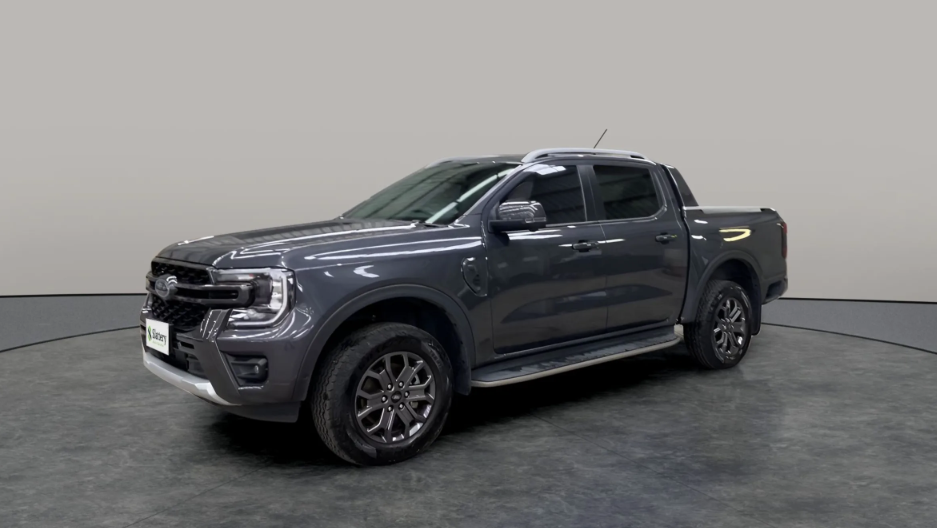
A well-equipped Ranger with the 3.0-litre turbo-diesel engine and 10-speed auto transmission. Showing 77,061km, it’s a one-owner ex-fleet vehicle with full logbook and service history (last serviced at 72,120km).
Presented in fair condition with some cosmetic wear – light scratches, dents and stone chips typical of fleet use – it remains fully driveable and includes both master and spare keys. Interior trim and carpets show general wear but are tidy overall. Features include roof racks, side steps, reversing camera, satellite navigation, DAB radio, and Bluetooth/USB connectivity. Tyres and spare are in good condition.
Registered in Victoria (expiry August 2026) – transfer available only to Victorian licence holders; interstate buyers will receive the vehicle unregistered.
- Total mileage: 77,061km
- Location: VIC
- Auction ends: October 29 at 18:00 (AEDT)
2014 Ford F150 SVT Raptor Special Edition
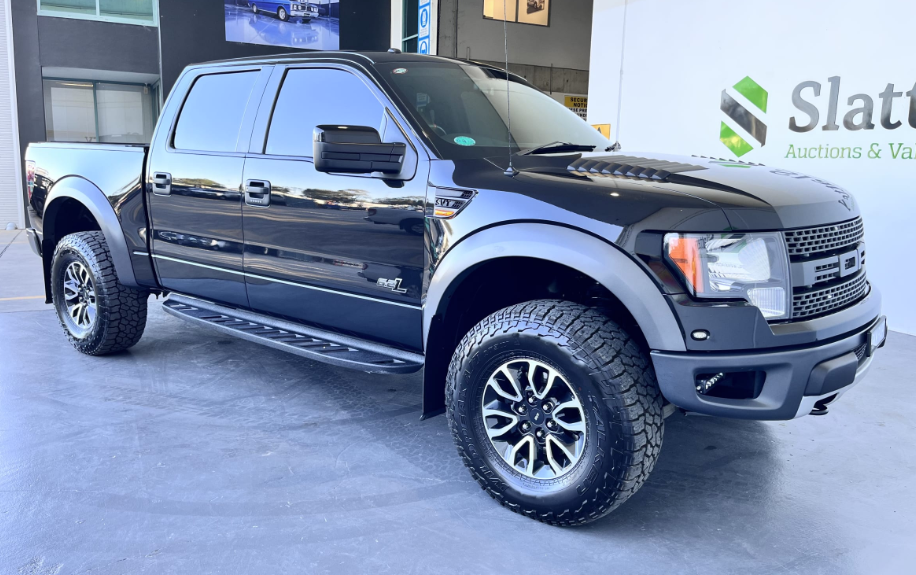
This 2014 Ford F150 SVT Raptor Special Edition is a high-performance, petrol-powered 4×4 pickup.
This example features Fox Racing shocks and airbag suspension for superior handling and ride comfort. With 51,359km on the odometer, it comes with the owner’s manual, master and spare keys, and is in good driving order. Sold unregistered and as-is, this Raptor Special Edition is a rare, capable 4×4 ready for enthusiasts seeking a performance off-roader.
- Total mileage: 51,359km
- Location: QLD
- Auction ends: October 29 at 18:00 (AEDT)
2011 RAM 2500 Laramie
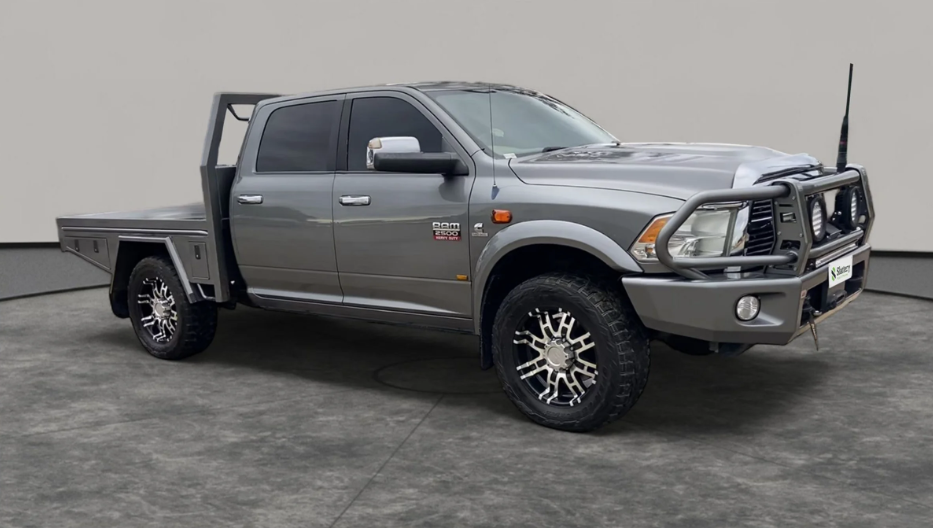
This 2011 RAM 2500 Laramie is powered by a 6.7L Cummins diesel engine producing 261kW, paired with a six-speed automatic transmission.
Featuring all-wheel drive, it comes as a tray/tabletop or cab-chassis configuration, making it versatile for work, towing or off-road use. Seating for five and the robust Cummins diesel engine provide a reliable platform for trades, touring, or modification projects. Sold registered and on consignment.
- Total mileage: 232,853km
- Location: VIC
- Auction ends: October 29 at 18:00 (AEDT)
2019 Toyota HiLux SR
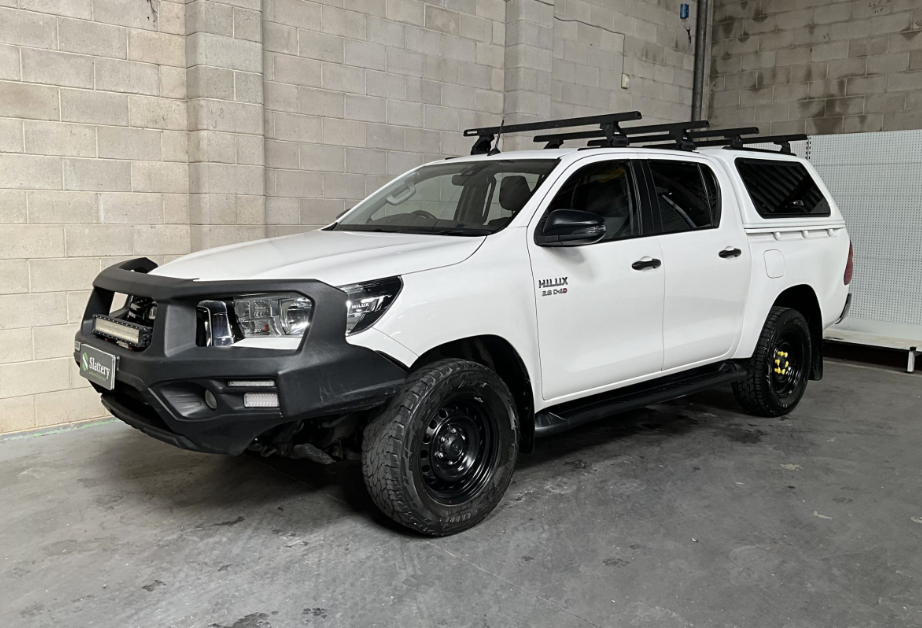
This 2019 Toyota HiLux GUN126R SR is a versatile 4×4 dual-cab pick-up, powered by a 2.8L turbo-diesel 4-cylinder engine with a 6-speed automatic transmission and full four-wheel drive.
With 117,686km on the odometer, it comes with the owner’s manual, master and spare keys, and full service history, last serviced at 114,910km. Sold unregistered without plates, the HiLux is driveable and in good condition overall. The body, trim, seats, carpets, and paint are all in good shape, with no rust present, making this a well-maintained, ready-to-go 4×4.
- Total mileage: 117,686km
- Location: SA
- Auction ends: ENDED
2020 Mercedes-Benz X-Class X250d
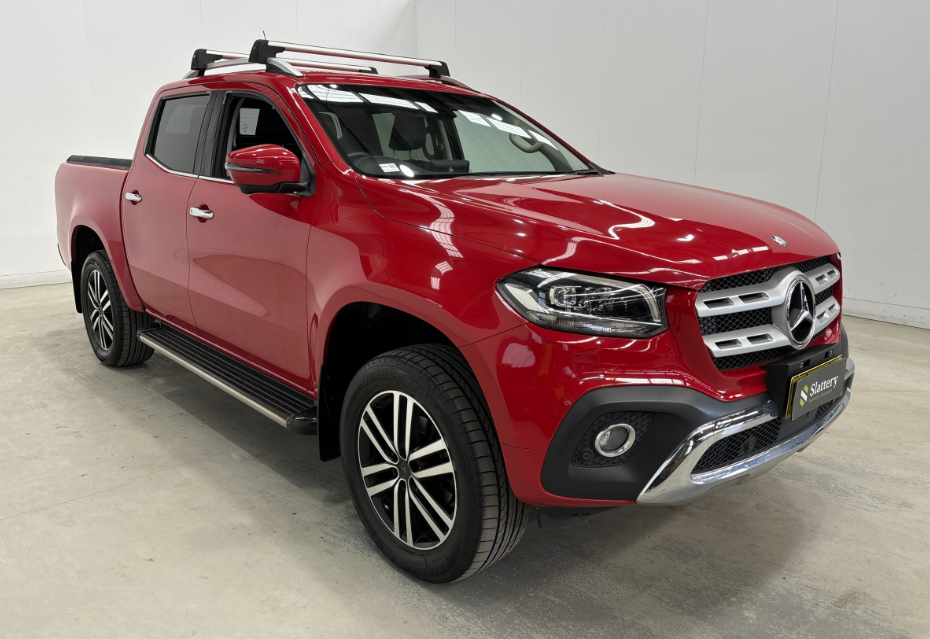
The 2020 Mercedes-Benz X-Class X250d is powered by a 2.3L turbo-diesel engine with a 7-speed sports automatic transmission and full 4MATIC four-wheel drive.
Odometer reads 57,449 km, and the vehicle comes with full Mercedes-Benz service history, last serviced at 54,275km, along with the owner’s manual, master and spare keys. Sold registered and on consignment, it includes a current roadworthy certificate and NSW plates, valid until May 5, 2026, with the balance of new car warranty until December 16, 2025.
- Total mileage: 57,449km
- Location: NSW
- Auction ends: ENDED
2014 Jeep JK Wrangler Overland
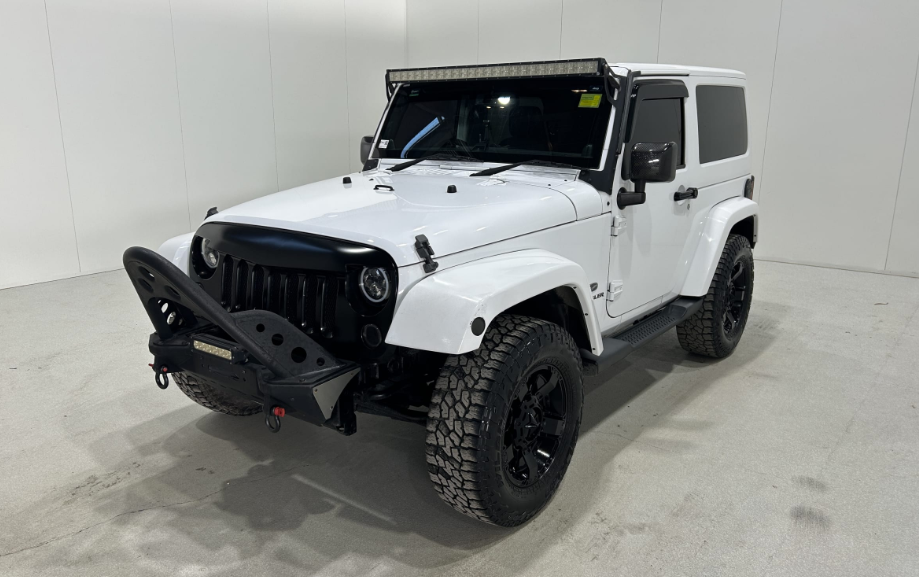
Up for auction is a 2014 Jeep JK Wrangler Overland, a capable 4×4 built for both off-road adventures and everyday driving.
Powered by a 3.6L V6 petrol engine with a 5-speed automatic and full four-wheel drive, it’s ready to tackle trails or highways. This Wrangler is being sold unregistered without plates from repossession and liquidation stock. Odometer reads 170,019km. Comes with the owner’s manual and master key (no spare key) and is driveable.
Cosmetic condition is fair: scratches and dents around the body, left headlight not working, surface rust present. Seats, trim, carpets, and paint show wear, but the body remains solid and mechanically sound. A solid base for a weekend warrior, off-road project, or touring build.
- Total mileage: 170,019km
- Location: NSW
- Auction ends: ENDED
2020 RAM 1500 Express
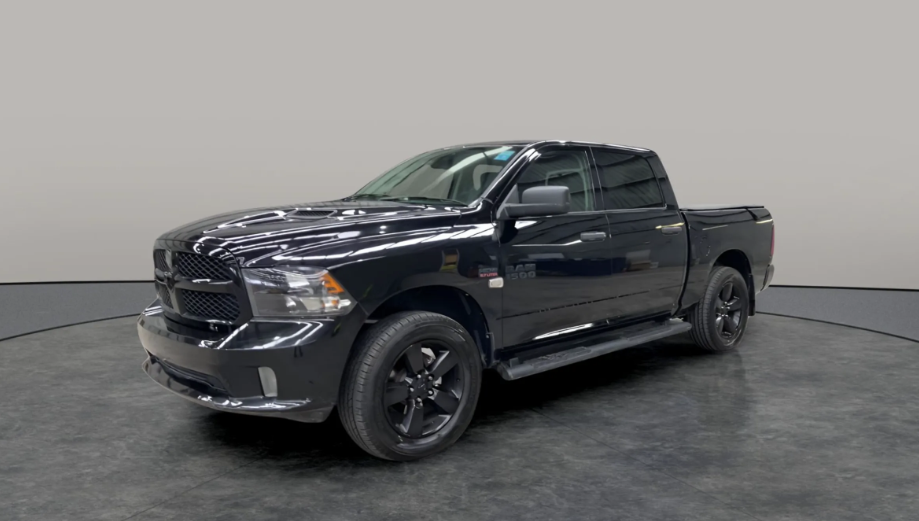
This 2020 RAM 1500 Express is a full-size 4×4 ute powered by a V8 petrol engine with automatic transmission, built for towing, work, and long-distance touring. Its four-wheel-drive setup provides both rugged off-road capability and highway comfort.
Sold unregistered without plates, it has an odometer reading of 106,230km and comes with full service history, last serviced at 57,298km. Both master and spare keys are included along with the owner’s manual, and the vehicle is driveable.
Overall condition is fair, with visible scratches and dents around the body. Paint is good, while seats, trim, and carpets show normal wear. A capable 4×4 utility ready for work, touring, or modification.
- Total mileage: 106,230km
- Location: VIC
- Auction ends: ENDED
2022 Suzuki Jimny GLX
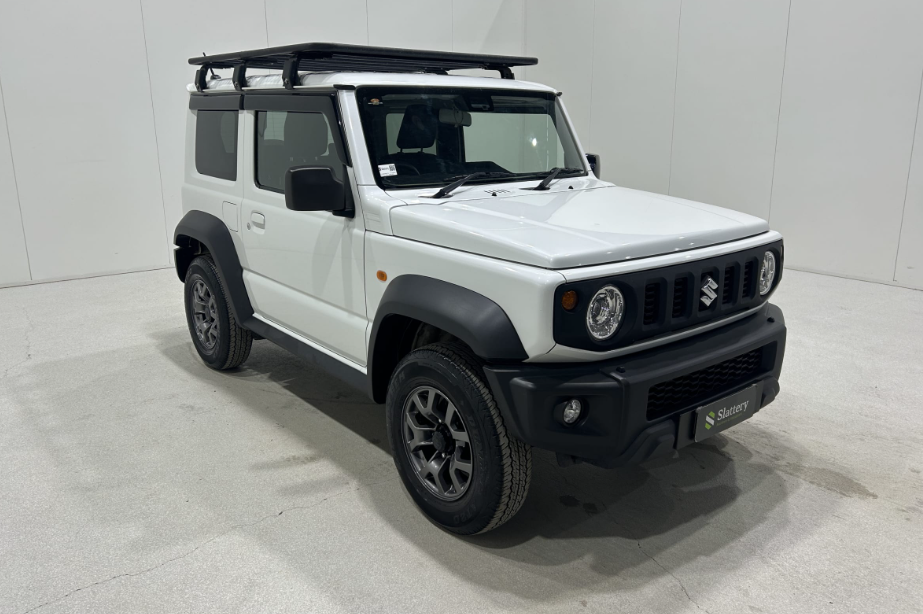
This 2022 Suzuki Jimny GLX AllGrip Hardtop is a compact, capable 4×4 SUV ideal for off-road adventures or city driving. Powered by a 1.5L petrol engine with automatic transmission and full four-wheel drive, it delivers agility and reliability on a variety of terrains.
Sold unregistered without plates for private buyers (registration and plates available only to licensed NSW dealers), it has 26,526km on the odometer and comes with full service history, last serviced at 19,232km. Both master and spare keys are included, and the vehicle is driveable.
Overall body, trim, seats, carpets, paint, brakes, and rust condition are good. Minor cosmetic issues include previous poor repairs on some doors and panels, small bonnet dents, stone chips on the roof gutter, and light scratches. Spare tyres are included and in excellent condition. A versatile 4×4 ready for weekend trips or city adventures.
- Total mileage: 26,526km
- Location: NSW
- Auction ends: ENDED
Always remember there are risks involved when buying vehicles at auction.
Mercedes-Benz Australia has reinstated a diesel-powered G-Class wagon to its line-up of G-Wagen models.
The new G450d joins the popular AMG G63 and all-electric G580 in the exclusive stable of premium off-roaders. The G450d lands with a starting MRLP of $214,900, but that figure soon climbs once you add on-road costs or tick any of the Mercedes-Benz option packs.
Mercedes-Benz option packs
Optional packs include the MANUFAKTUR Exterior Package at $4100 (MRLP), which adds paint finishes in either Obsidian Black or Night Black Magno, with matching bumpers and flared wheel arches.
The Interior Comfort Package ($8500 MRLP) brings a heated windscreen, heated steering wheel and heated armrests for the driver and front passenger, while rear occupants benefit from the MBUX High-End Rear Seat Entertainment System featuring two fully integrated 11.6-inch displays connected to the main multimedia platform.
The PROFESSIONAL Exterior Package ($15,900 MRLP), while the AMG Luxury Package ($18,000 MRLP) adds silver under-tray protection, AMG brake calipers, a silver chrome radiator grille and protective strips with aluminium-look inserts. Illuminated stainless-steel door sills, stainless-steel rear loading-sill protection and AMG-branded floor mats lift the cabin, while a spare wheel cover in body colour with a stainless-steel ring keeps the rear design distinctive.
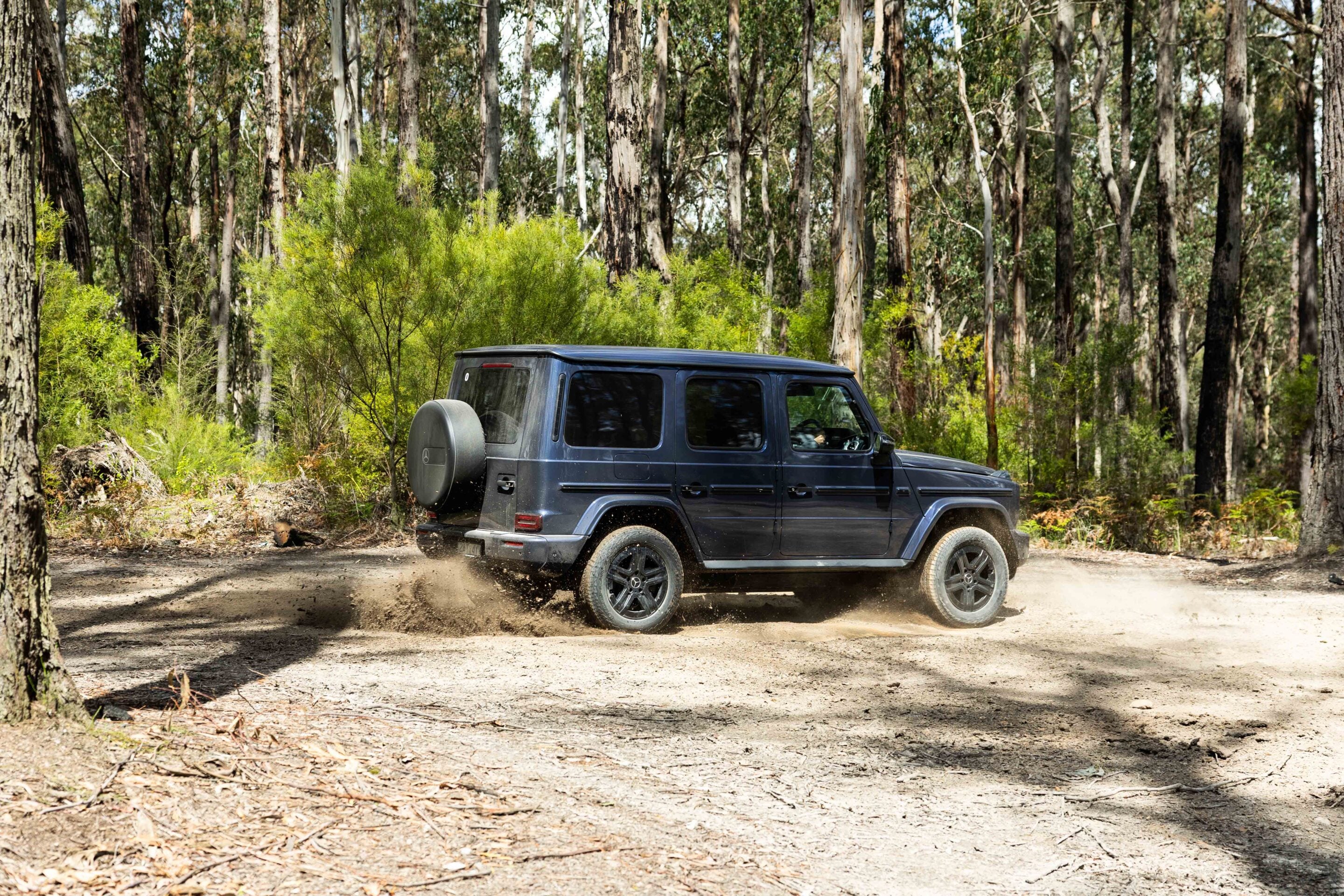
Inside, a multifunction sports steering wheel in Nappa leather, black microfibre roof liner, ionisation of interior air and a leather-trimmed upper dashboard reinforce its premium focus. Completing the package are 20-inch AMG 5-twin-spoke light-alloy wheels and side running boards for easier entry.
Finally, there’s the Night Package ($5600 MRLP) – available only with the AMG Luxury Package – or the Superior Line Interior Plus Package ($14,200 MRLP), also available exclusively with the AMG Luxury Package. Still, the G450d is the most affordable model in the G-Class range, with the AMG G63 priced at $368,400 (+ORC), the new AMG G63 Offroad Pro at $383,900 (+ORC), and the all-electric G580 starting at $249,900 (+ORC).
What the G450d offers
Prior to the introduction of the G450d, the last diesel-powered G-Wagen offered in Australia was the G400d back in 2021, but that model was short-lived.
Significantly, the G400d was the first G-Wagen with an independent front suspension and a wider cabin designed to enhance interior comfort. For the 40 years before that, G-Wagens always ran live axles front and rear. The independent front suspension carries over to the G450d, and that’s a good thing for overall driveability and handling. It gives the G-Class characteristics more in line with its target market’s expectations.
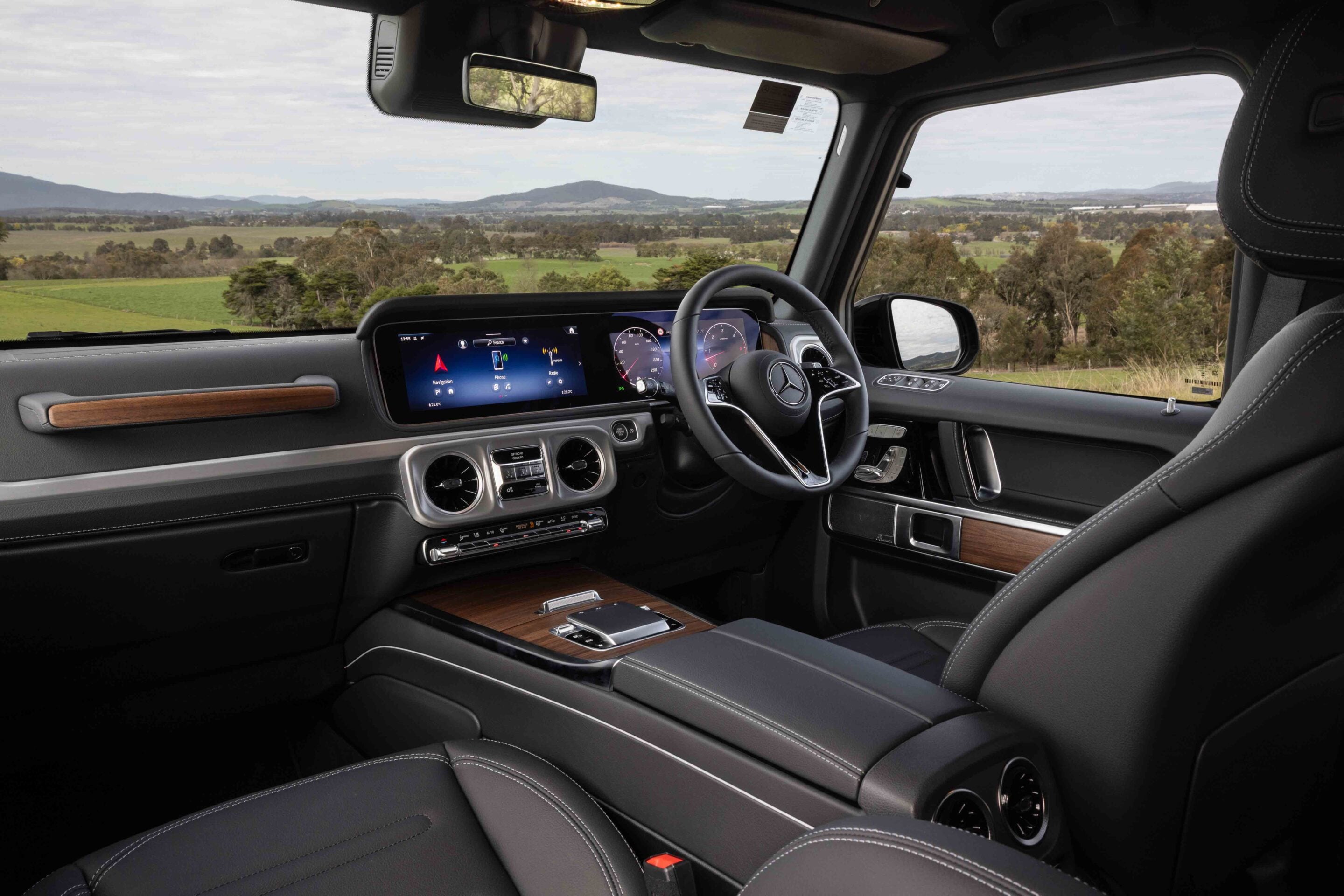
Likewise, the well-appointed wider cabin delivers a luxurious feel while retaining that vault-like solidity when you close the doors. The G450d’s interior benefits from the model update that followed the G400d, introducing a new dashboard, multimedia system and overall cabin fit-out. These updates were first seen in the G63 and G580 models currently on sale.
The G450d retains the 3.0-litre OM656 inline six-cylinder engine previously used in the G400d, but it now benefits from an integrated starter-generator and a 48-volt electrical system, lifting claimed combined outputs to 270kW and 750Nm – up from 243kW and 700Nm in the G400d. This mighty engine is still paired with a nine-speed automatic transmission, full-time four-wheel drive and triple diff locks for supreme off-road capability. Unfortunately, most G-Wagen buyers will never fully appreciate the vehicle’s off-road abilities.
Driving performance
We had the opportunity to test the G450d’s capability first-hand with a day trip to Bunyip State Forest, near Melbourne.
Climbing into the G-Wagen brings a welcome sense of familiarity despite the years since we last experienced the model. The cabin isn’t large but offers ample space and feels more accommodating than earlier versions. The doors close with a solid clunk, giving the impression the G-Wagen has been carved from a single billet of steel. The plush leather seats and rich interior trims soften that metallic edge, delivering the comfort expected of a luxury Mercedes. High equipment levels and a premium multimedia system further reinforce the upmarket feel.
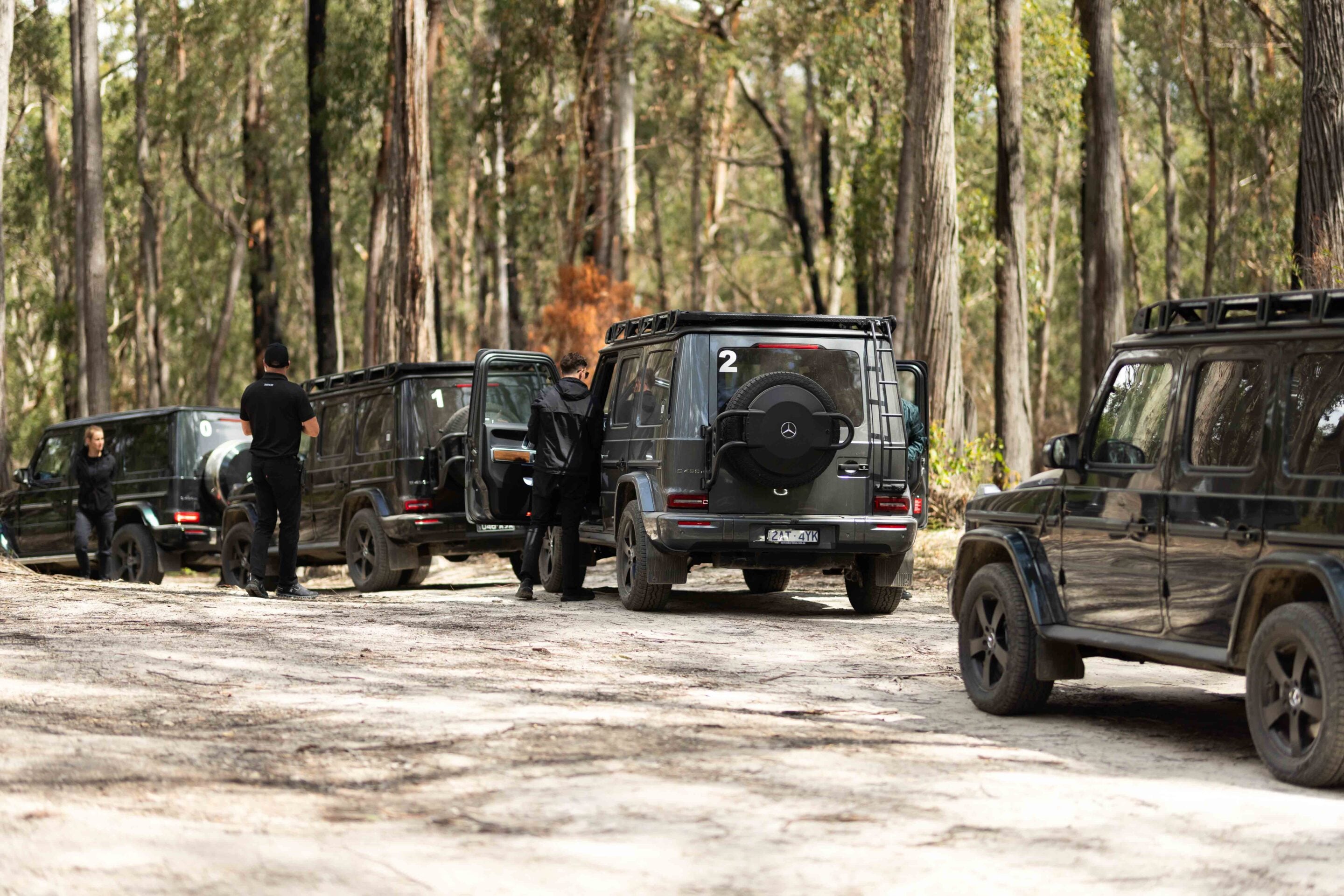
The G450d feels smooth and composed on both highways and backroads heading out of town. The engine is silky and its torque delivery seamless, pairing perfectly with the nine-speed transmission. This could be the best diesel engine I’ve ever driven — and that’s saying something, considering I was behind the wheel of a Cummins-powered Ram just days earlier. Benz’s OM inline-six does a superb job of masking any diesel clatter or vibration, continually feeding that syrupy-smooth wave of torque.
The G feels heavy in tight turns when the mountain roads get twisty, but you don’t need to wrestle it like the old live-axle G-Professional models. The 18-inch wheel and tyre package strikes a great balance between ride quality and handling, while still offering enough sidewall height and all-terrain tread for off-road travel. This was especially appreciated when the forest roads turned to gravel and the Benz never put a foot wrong, and there was no excessive ADAS intervention.
The G-Wagen’s platform is stiff and doesn’t allow a lot of wheel travel, but the rear axle still slinks through deep ruts while the independent front suspension is surprisingly competent. When things got rougher, we made use of the diff-lock buttons in the centre of the dash, engaging the centre and then rear diffs as needed, without ever requiring the front locker on these tracks.
Verdict
The G450d adds a more practical option to the G-Wagen range in Australia.
It maintains the luxury and capability of the iconic Geländewagen, but with the efficiency of its superb diesel powerplant and sensible all-terrain tyres. The AMG G63 might be the ball-tearing hot rod of the G range, and the G580 might give you that warm, fuzzy feeling of saving the planet, but the G450d delivers the happy medium for any and all adventures.
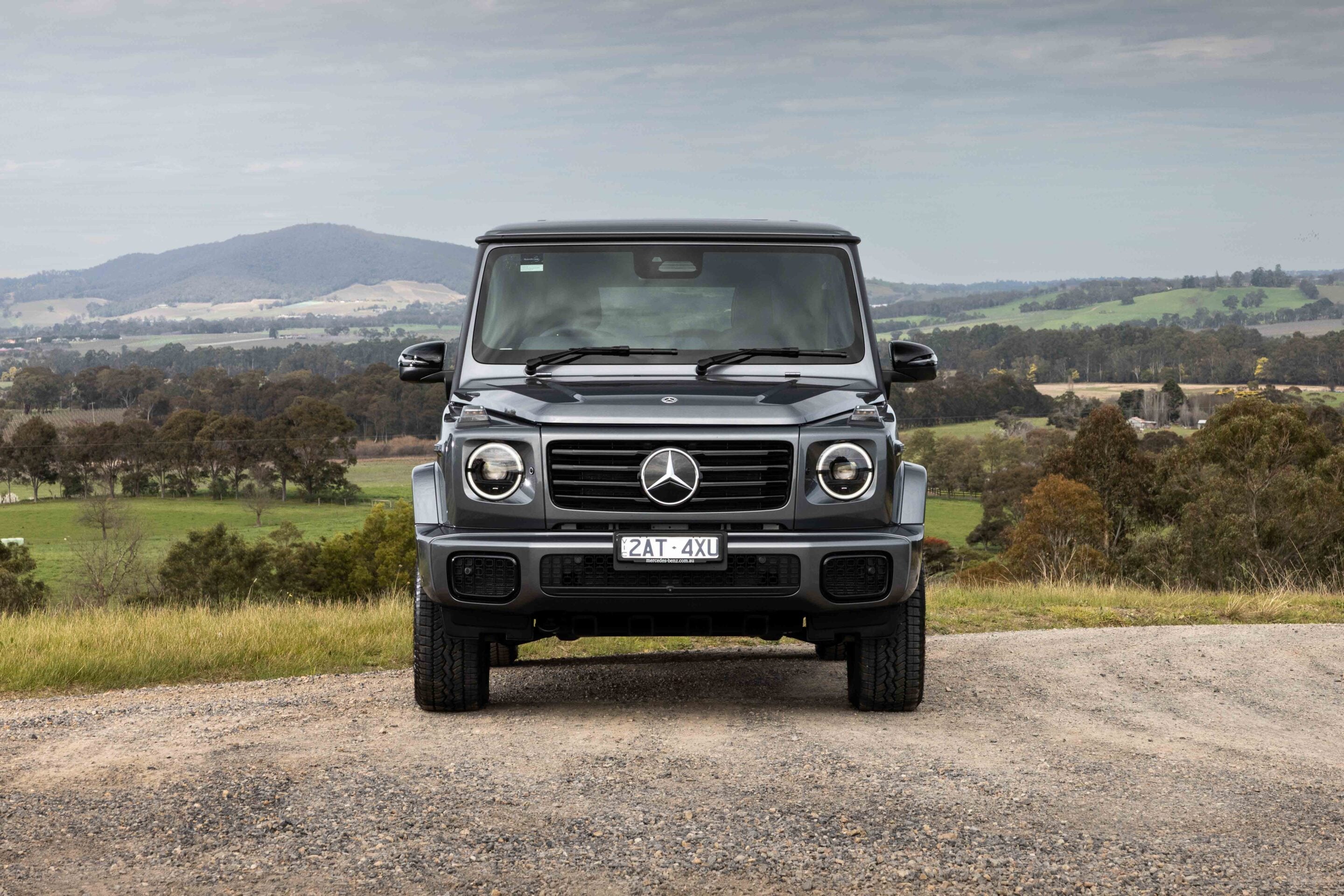
2025 Mercedes-Benz G450d specs
| 2025 Mercedes-Benz G450d | |
|---|---|
| Price | From $214,900 +ORC |
| Engine | I6 turbo-diesel |
| Capacity | 2925cc |
| Max Power | 270kW |
| Max Torque | 750Nm |
| Transmission | 9-speed automatic |
| 4×4 System | Full time w/ locking centre diff and dual range; front & rear diff locks |
| Construction | 5-door wagon body on ladder frame chassis |
| Front Suspension | Independent double wishbone w/ coil springs |
| Rear Suspension | Live axle with multi-links and coil springs |
| Tyres | 265/60R18 on alloy wheels |
| Kerb Weight | 2535kg |
| GVM | 3200kg |
| Payload | 665kg |
| Towing Capacity | 3500kg |
| Seating Capacity | 5 |
| Fuel Tank | 112L / 31.6L AdBlue |
| ADR Fuel Claim | 9.4L/100 km |
| Departure Angle | 29.9 |
| Ramps Over Angle | 23.5 |
| Approach Angle | 30.9 |
| Wading Depth | 700mm |
| Ground Clearance | 241mm |
AMG G63 Offroad Pro
Around the same time the G450d landed in Australia, Mercedes-Benz also introduced the AMG G63 Offroad Pro model to the range.
The Offroad Pro takes the stonking AMG G63 — with its bellowing 430kW twin-turbo V8 — and adds extra off-road prowess thanks to clever technologies within the AMG Active Ride Control and Traction Pro systems.
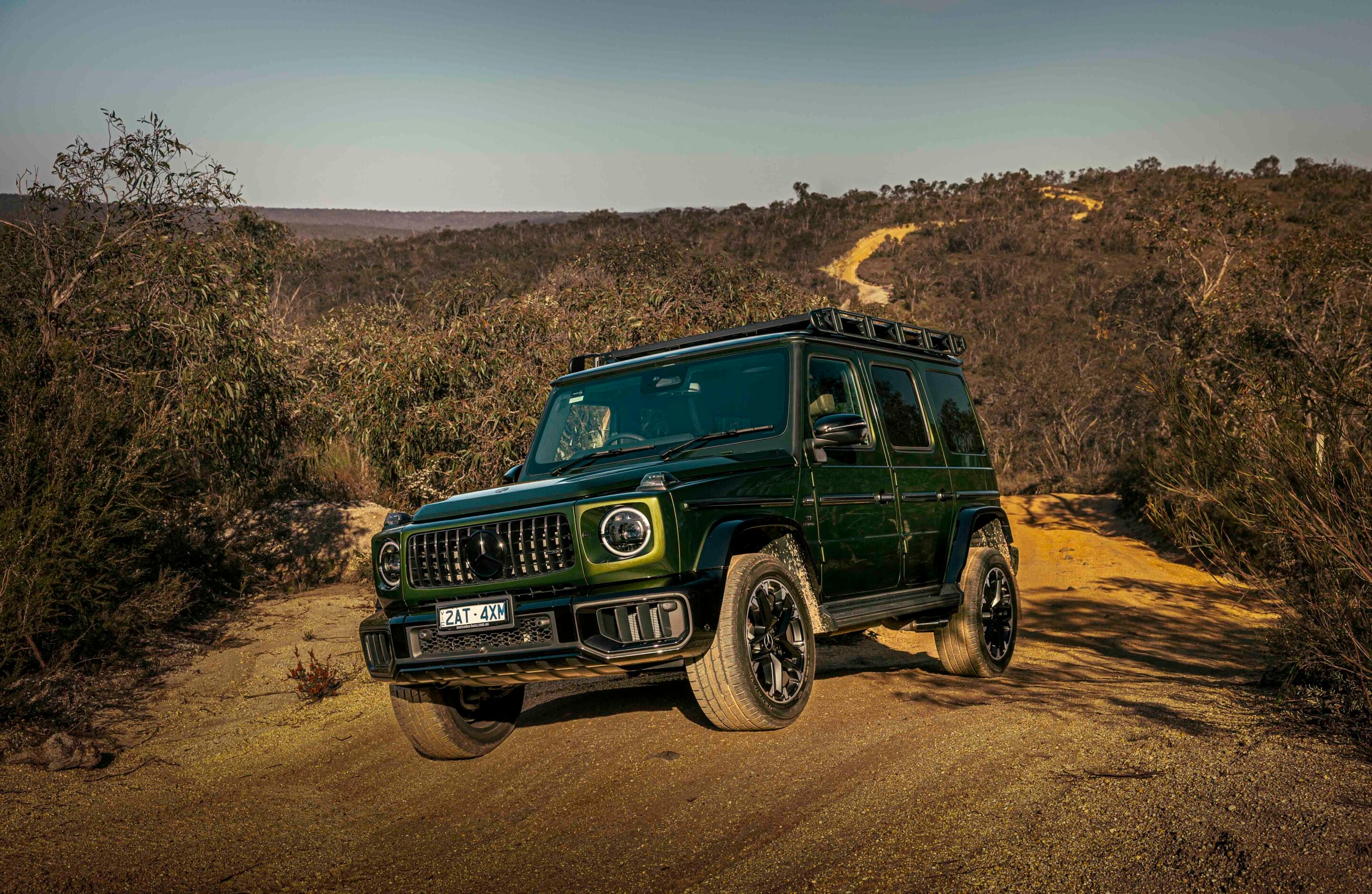
The AMG Active Ride Control suspension with active hydraulic roll stabilisation uses specially tuned dampers with increased piston diameters and larger pressure reservoirs, claimed to enhance axle articulation and overall stability. AMG Active Balance Control further refines handling by allowing roll stiffness to be adjusted in three stages (LOW, MID, HIGH), tailoring stability for everything from loose rock to fast sand tracks.
Traction Pro enhances the electronic traction control system to better cope with rough terrain, while the G63 retains its triple diff locks for ultimate traction — even on the standard 20-inch wheels and tyres. The Offroad Pro kit also includes rubber floor mats, mudflaps and a flat alloy roof platform with access ladder.
We’re not sure there are many G63 owners who’ll actually take their AMG off-road, but at least with this kit, they’ll look like they can.
Karmo, Australia’s largest car subscription provider, has partnered with INEOS Automotive to make the Grenadier Station Wagon and Quartermaster available via subscription for the first time in Australia.
Subscriptions start from $575 per week for both vehicles, which includes a nine-month minimum term, 385km weekly allowance, and coverage for one driver. Higher-cost options are available, which can reduce the minimum term. The subscription covers registration, servicing, maintenance and roadside assistance, all in a single weekly fee, with no long-term ownership commitment. Drivers can also swap vehicles or end their subscription at the end of the term.
“The Grenadier is one of the toughest 4×4 vehicles on the market, built for rugged Australian conditions. We’re thrilled to partner with INEOS to make this vehicle available via an accessible, flexible subscription model, in time for the summer adventure season. Whether for work or adventure, customers can now experience the Grenadier without the complexity or cost of traditional ownership,” said Nick Boucher, CEO and Co-Founder of Karmo.
“Partnering with Karmo allows more Australians to get behind the wheel of a 4×4 vehicle engineered for the realities of Australian life. Opening up this new channel to market offers people a new way to experience the legendary capability of the Grenadier range, with flexibility and simplicity offered by Karmo’s subscription model,” added Justin Hocevar, Regional Director – APAC, INEOS Automotive.

How it works
Karmo’s subscription model includes the vehicle, insurance, registration and servicing in a single weekly or monthly payment. Proprietary software manages the subscription process, making it straightforward for customers.
- Select a vehicle: Choose from Karmo’s available fleet.
- Apply and approve: Complete an online application with identity and credit checks.
- Set up payment: Finalise paperwork and set up weekly or monthly payments.
- Drive: Insurance, registration, and servicing are included.
- Return or swap: At the end of the term, return the car or swap for another.
Pros
- Subscription covers most running costs in a single payment
- Flexible terms and vehicle swaps are possible
Cons
- Mileage limits and early termination fees may apply
- Vehicle availability depends on fleet stock